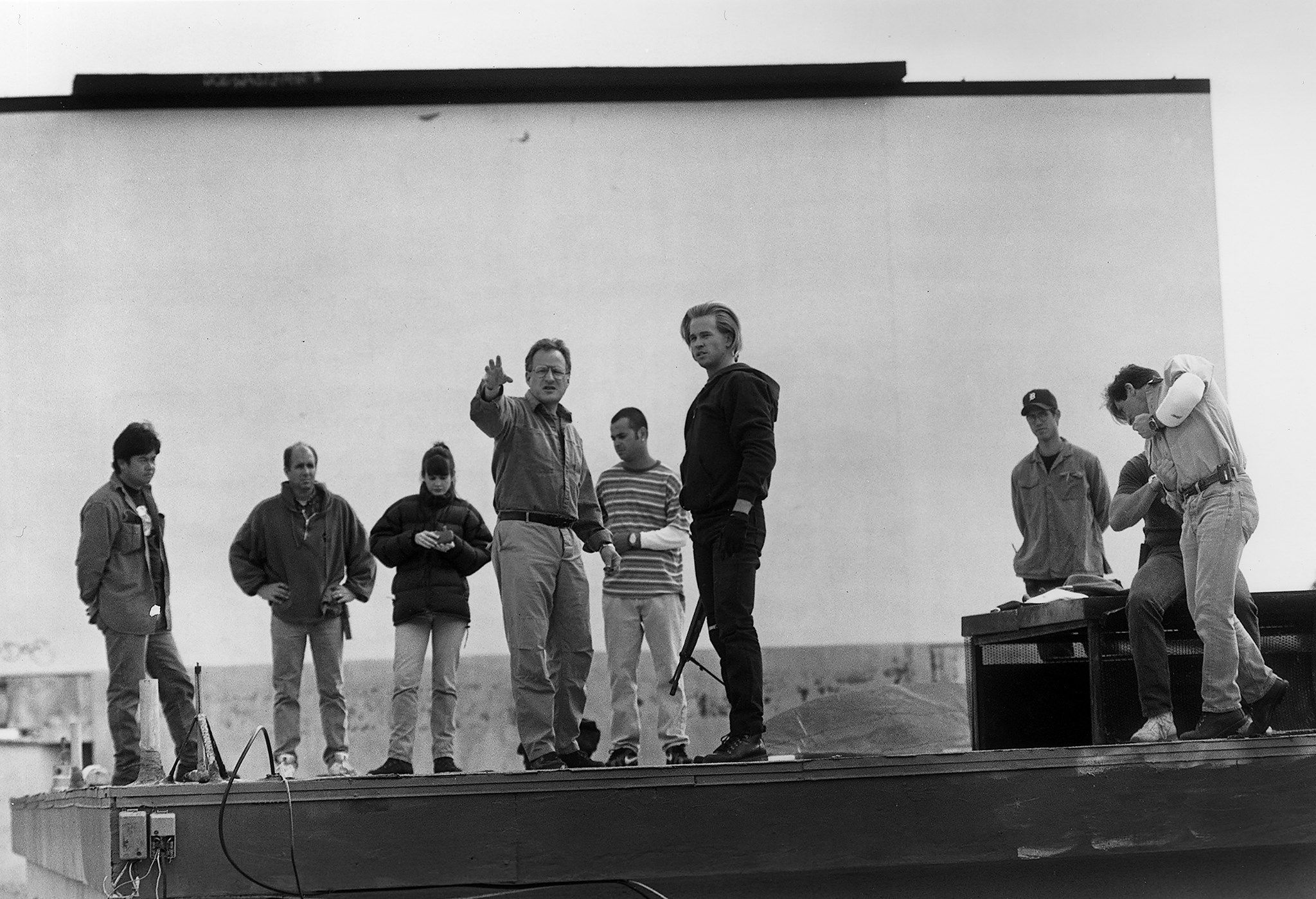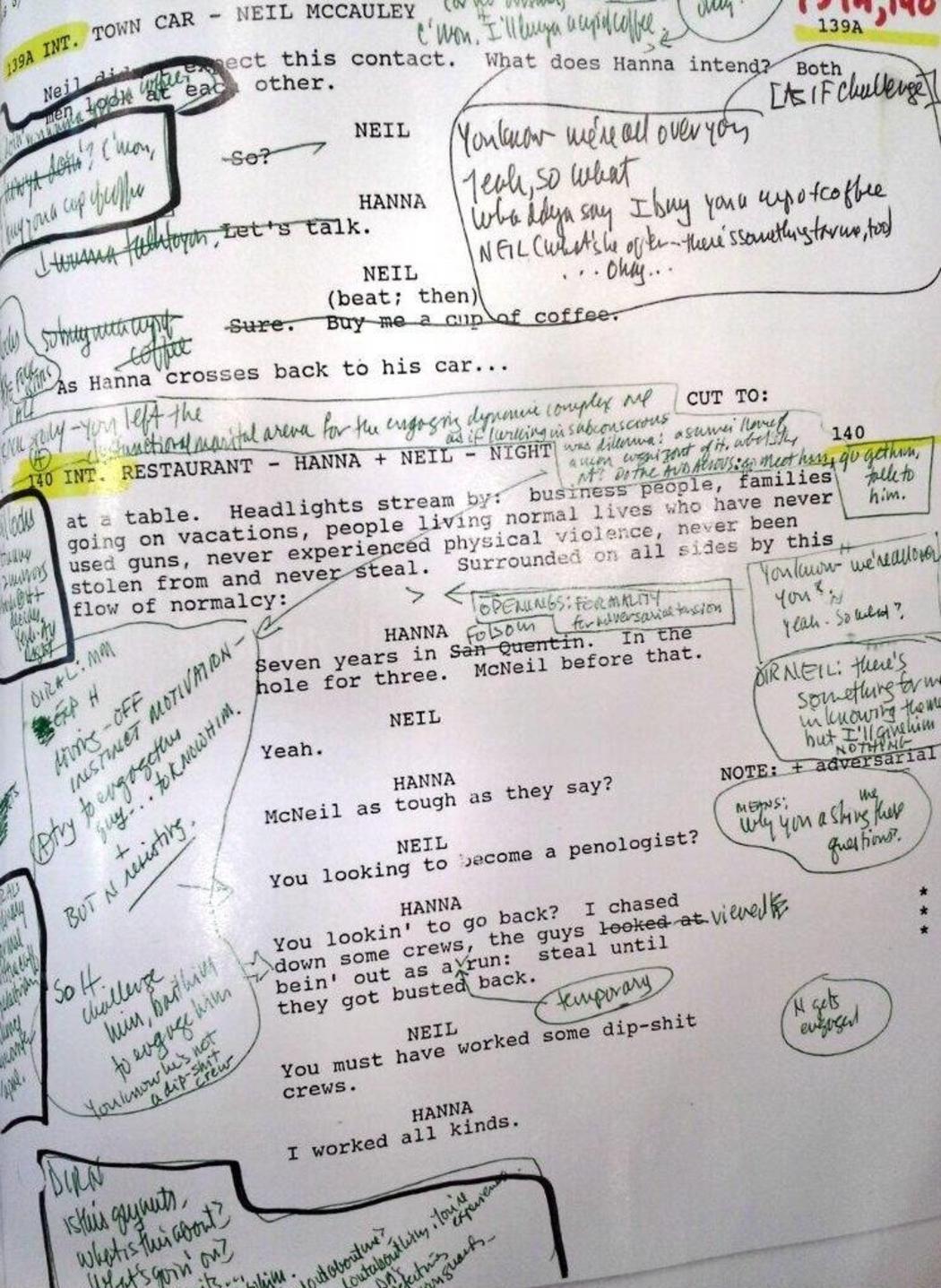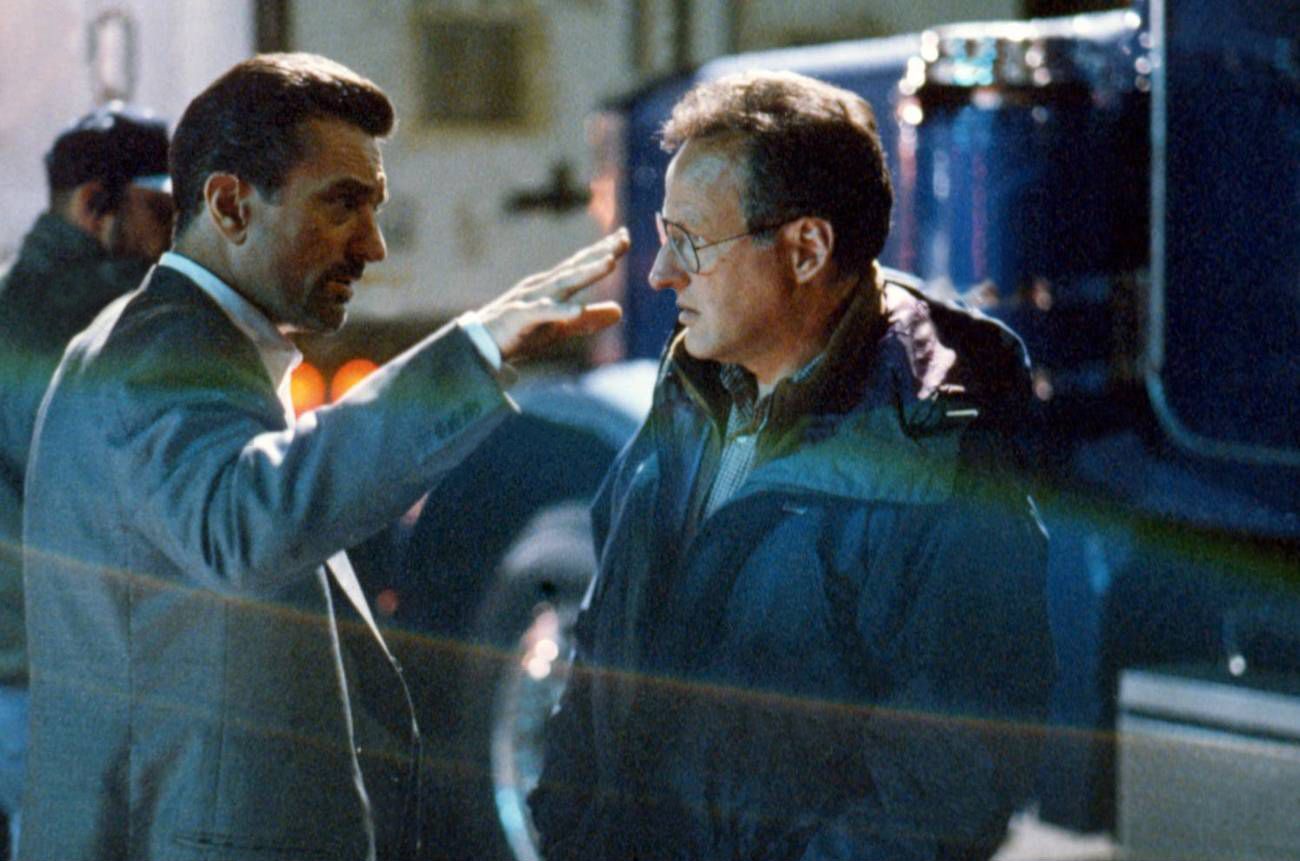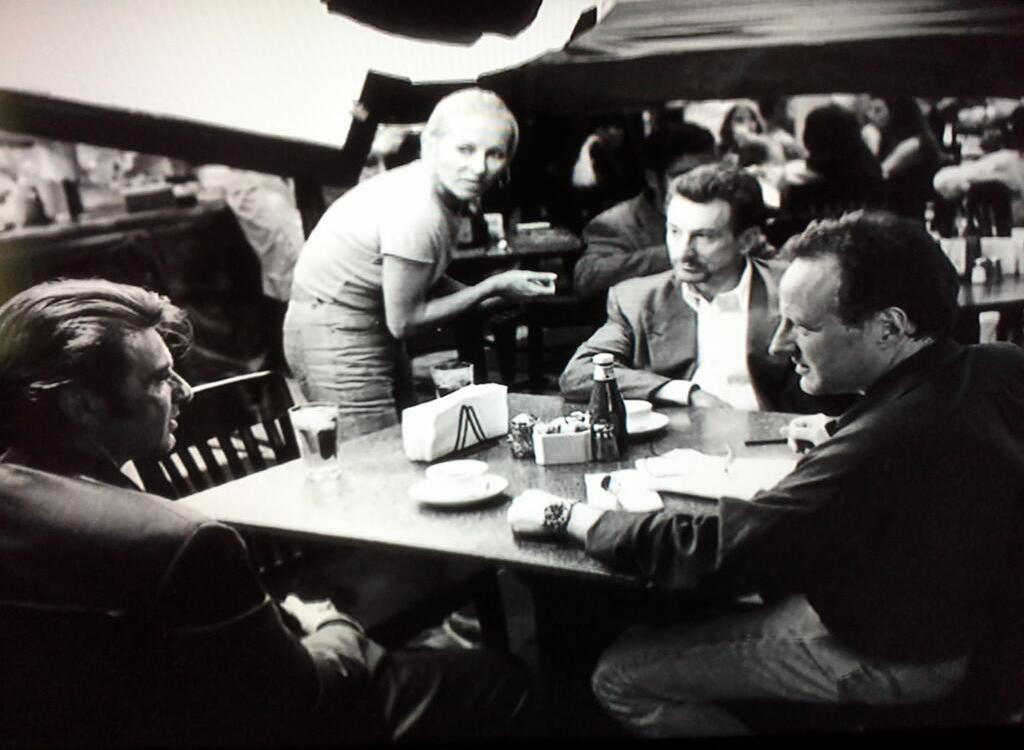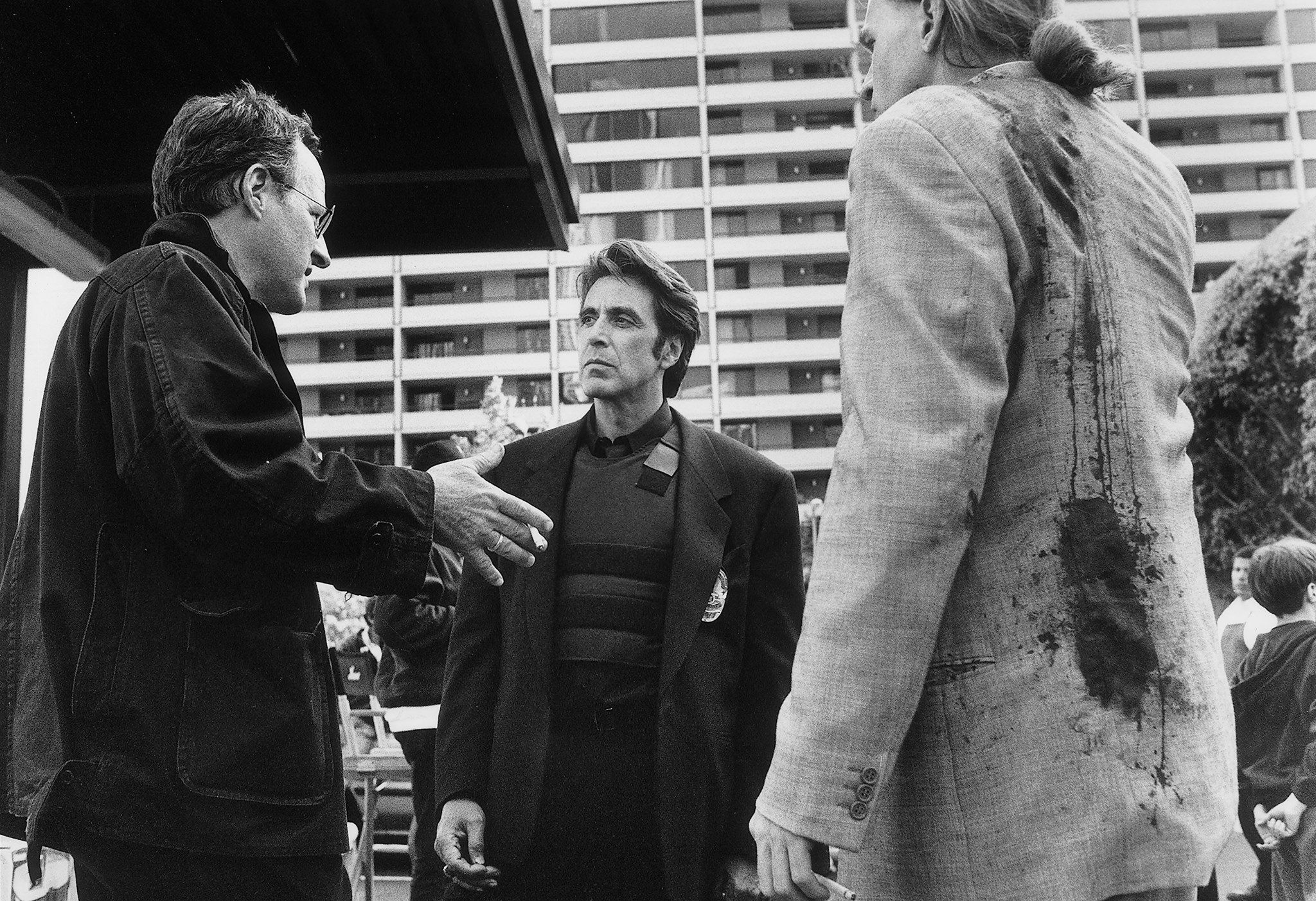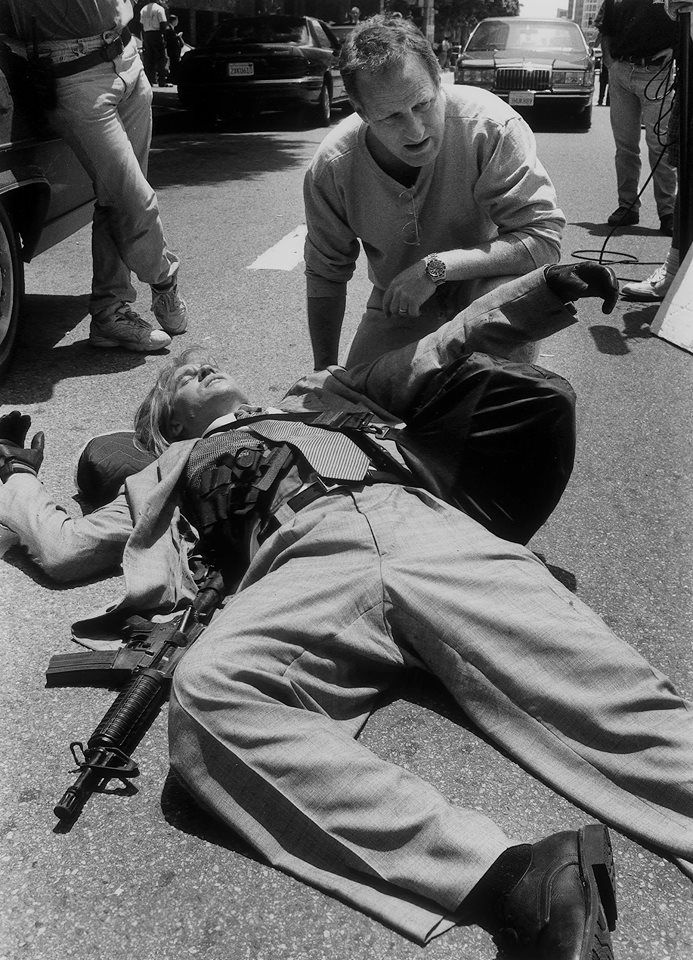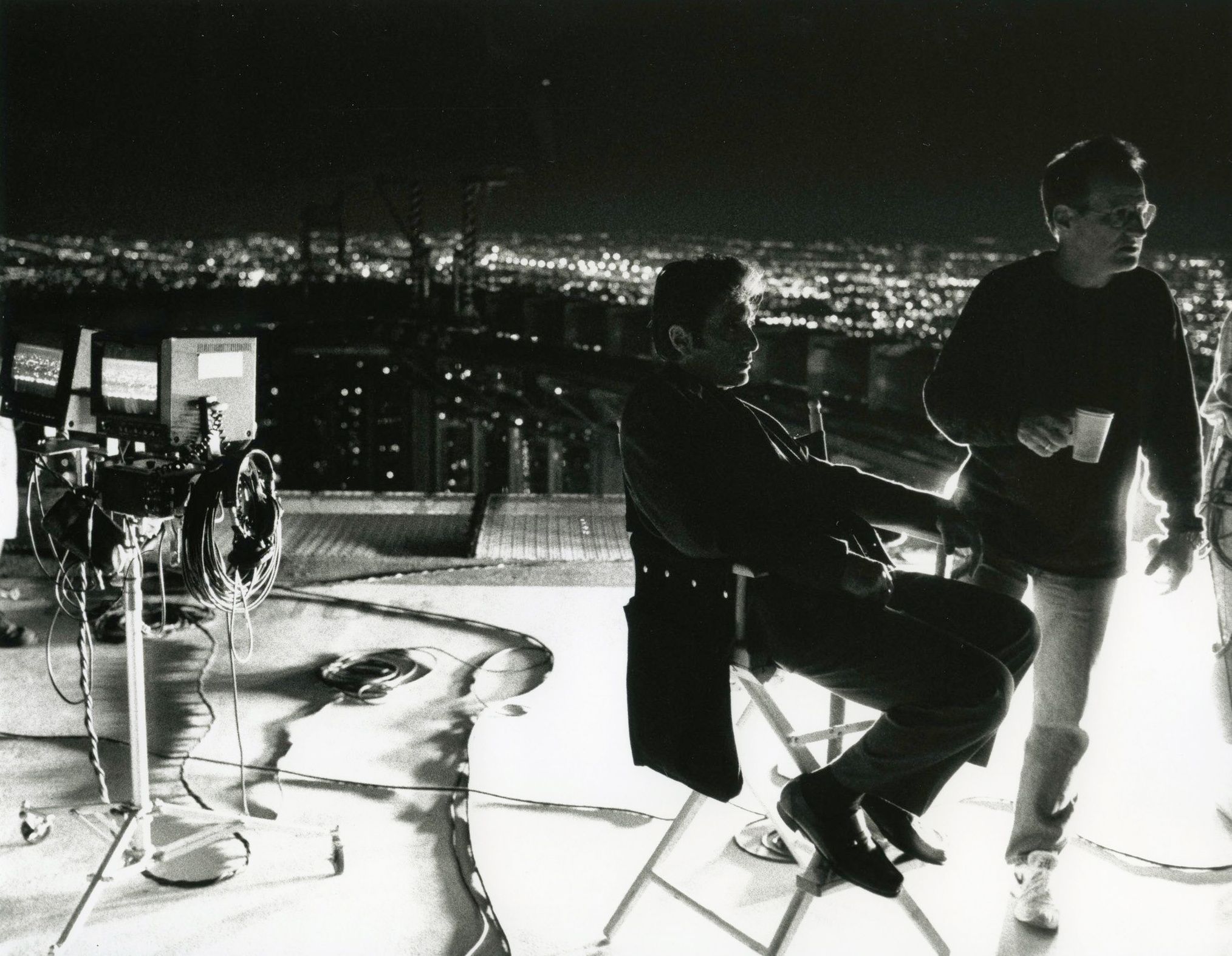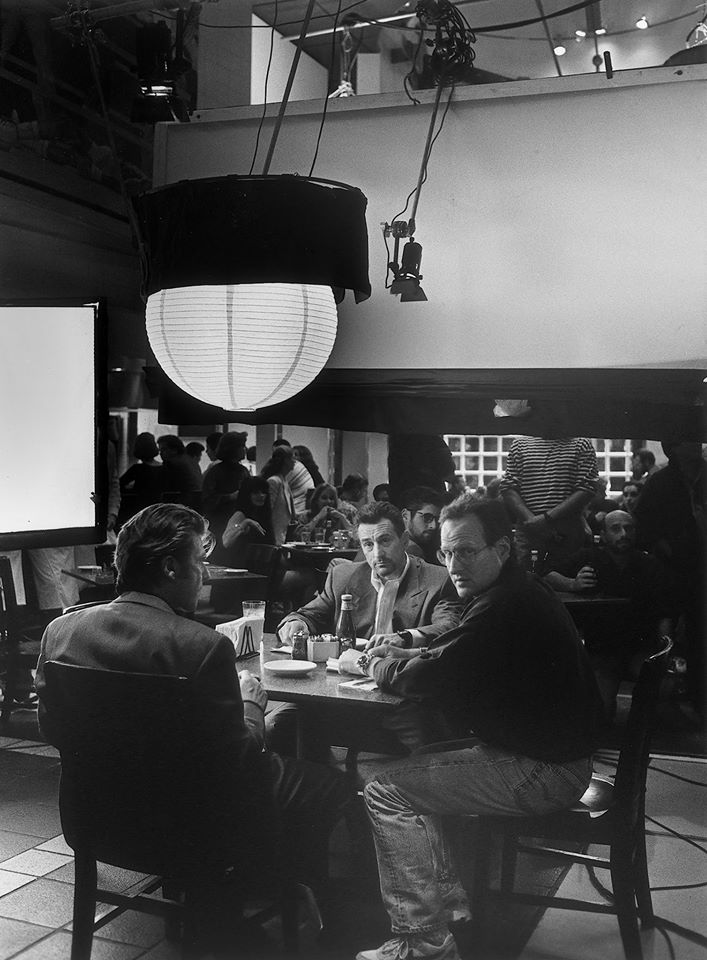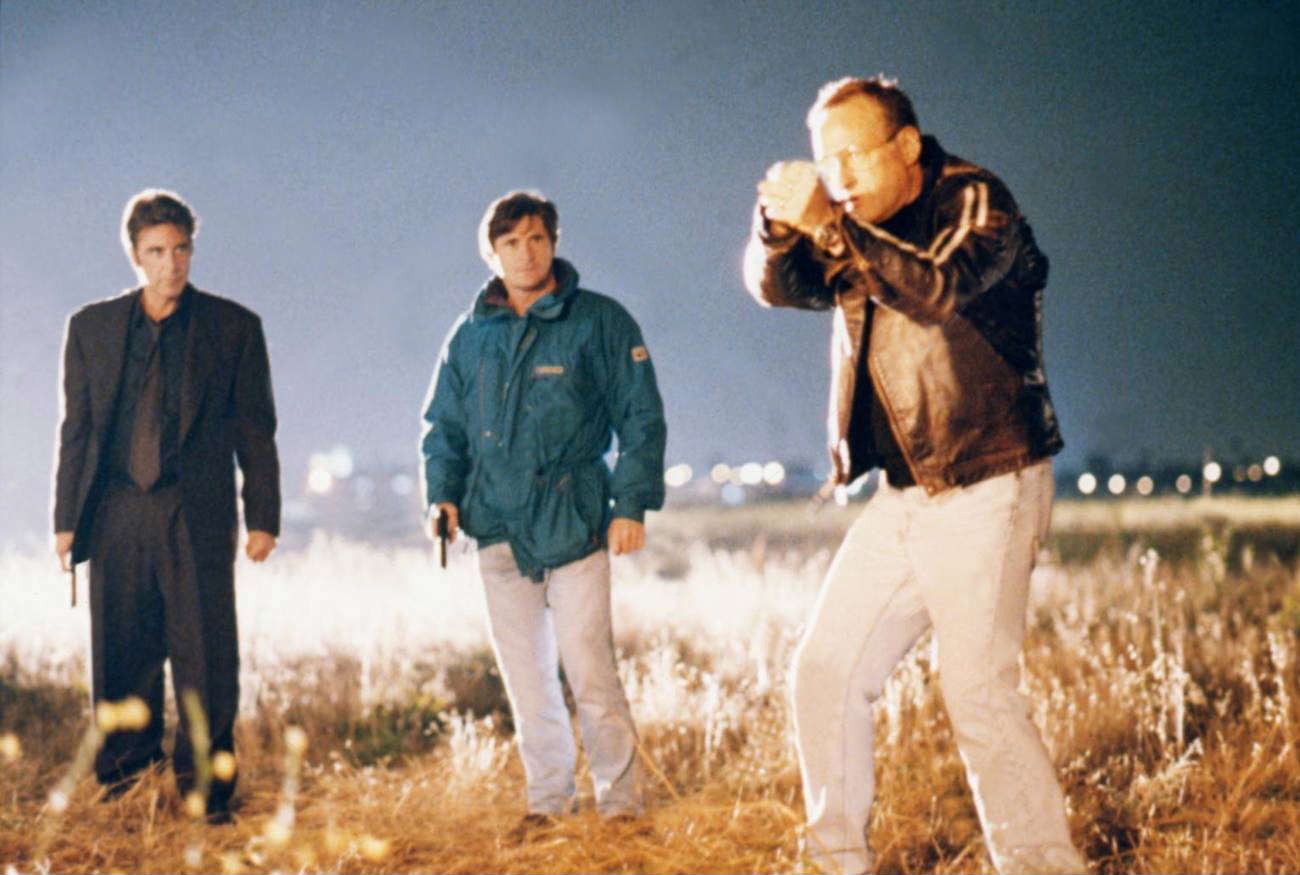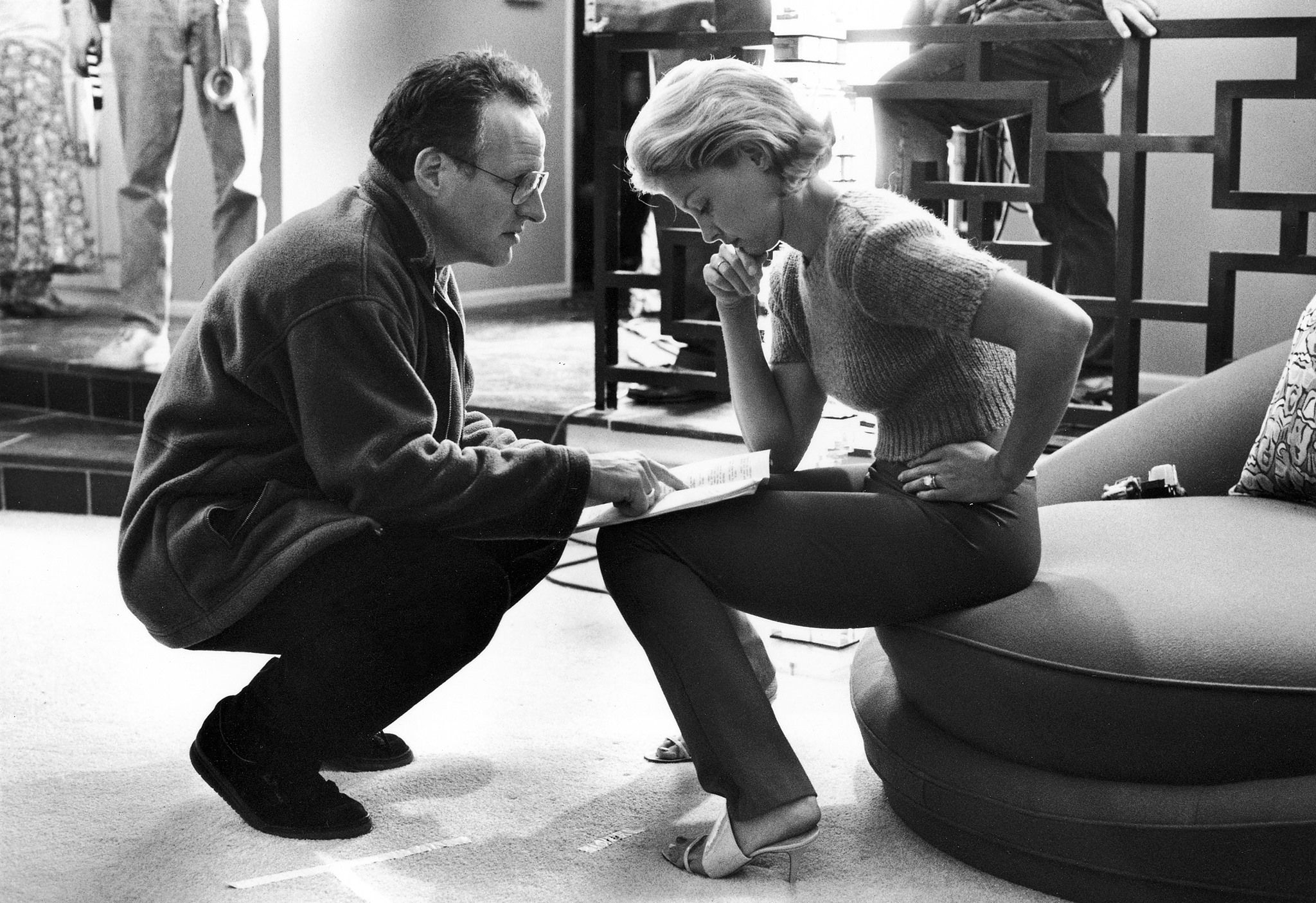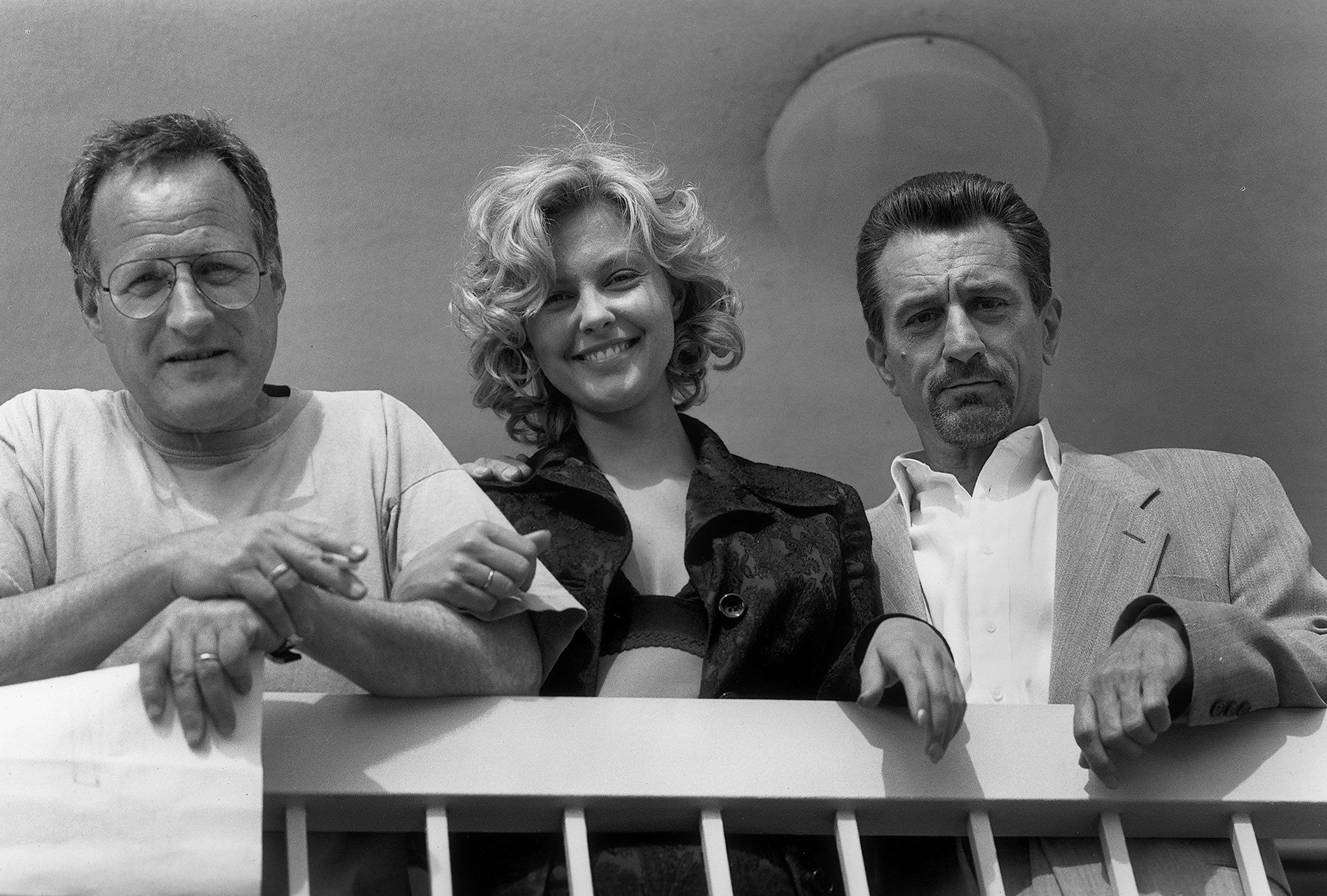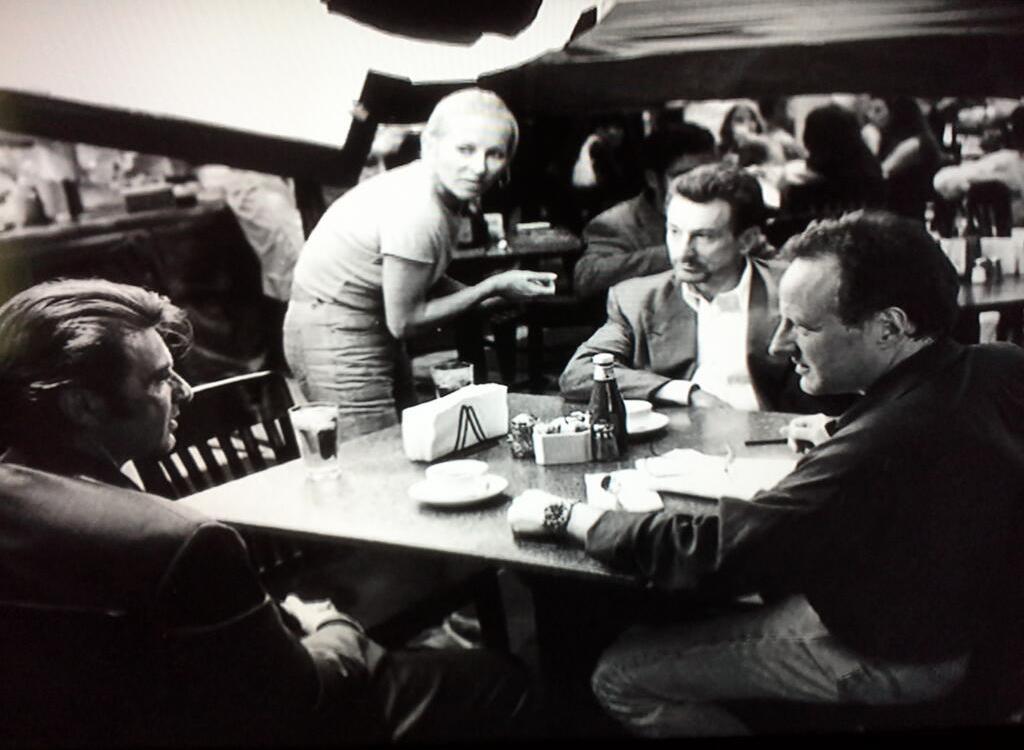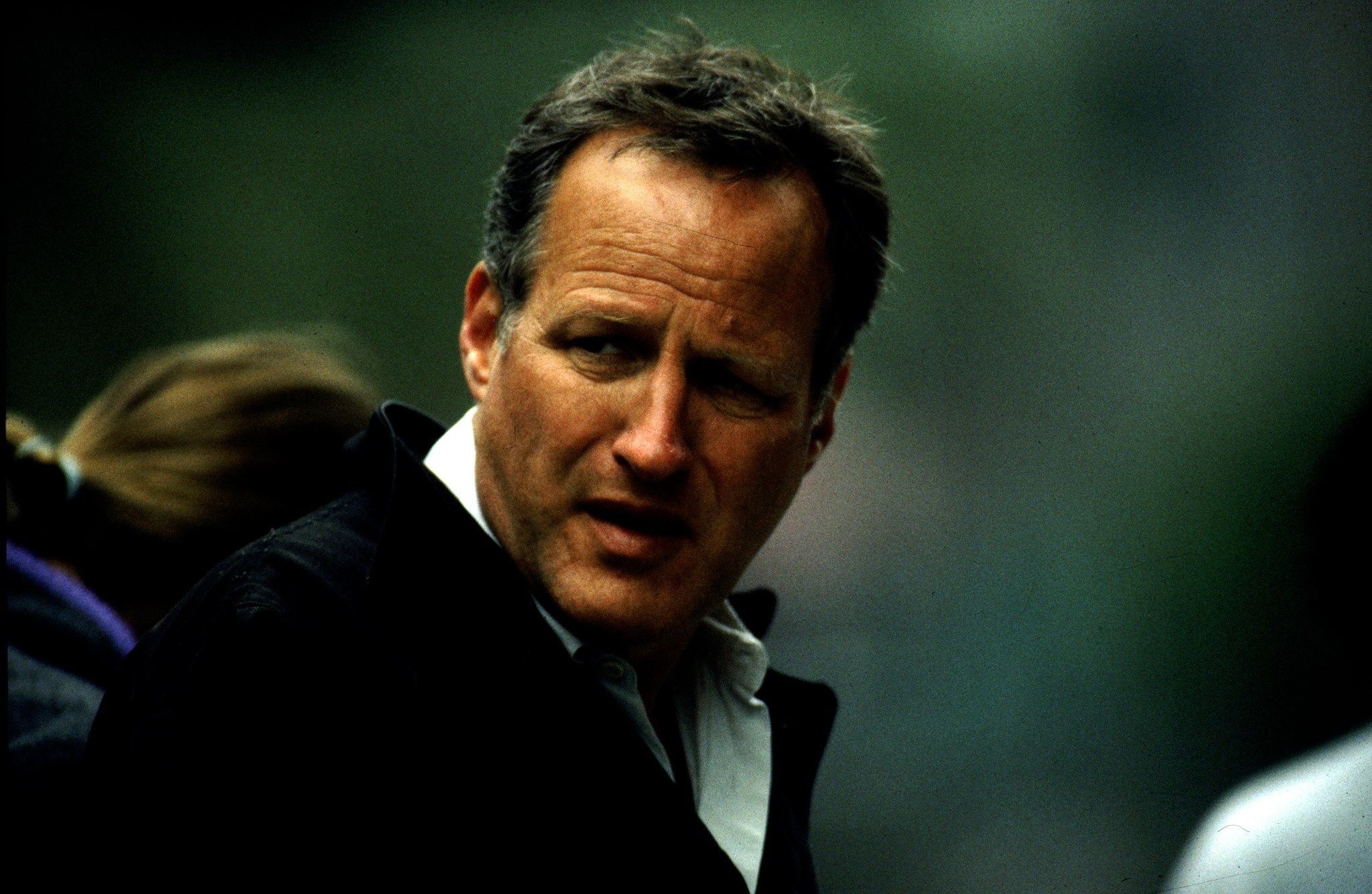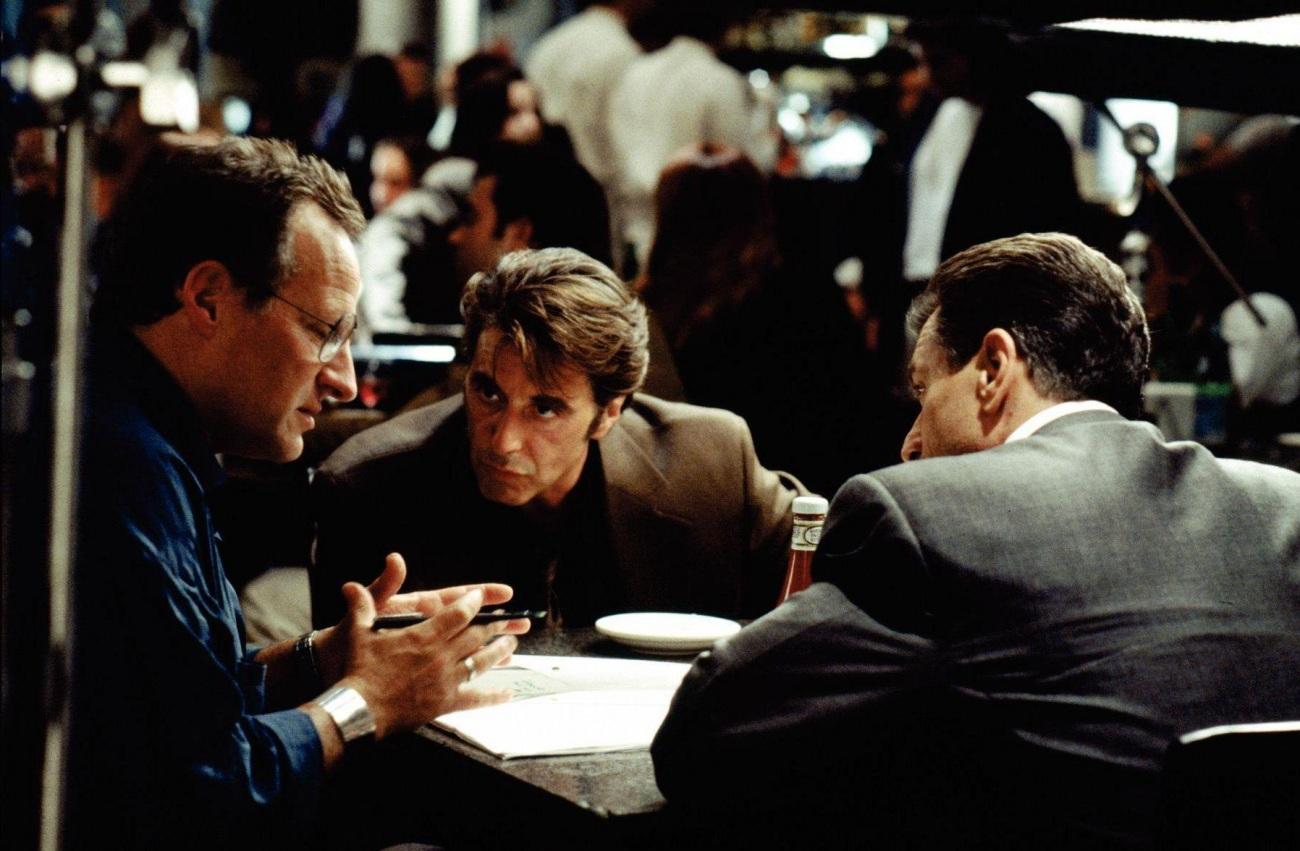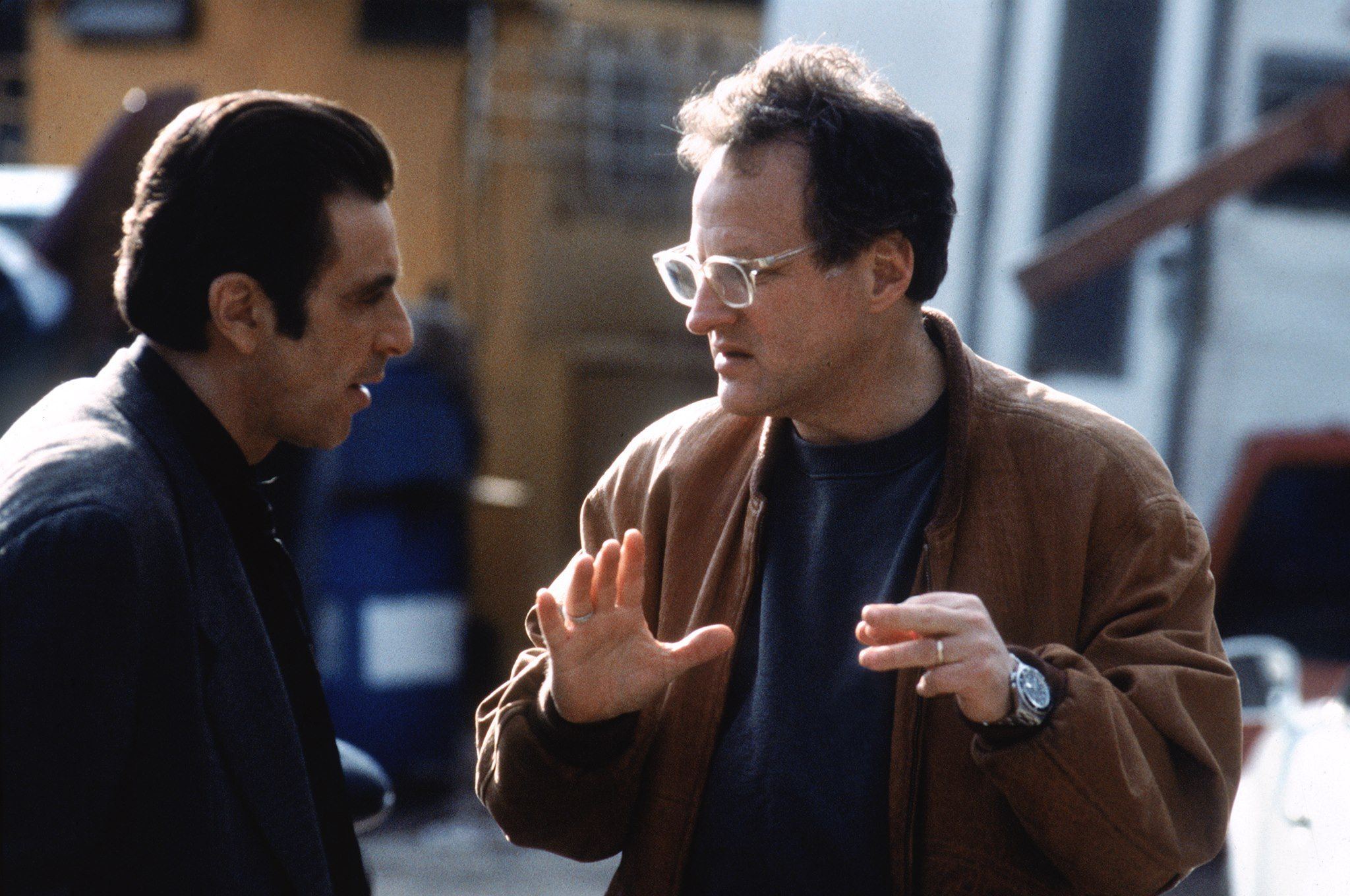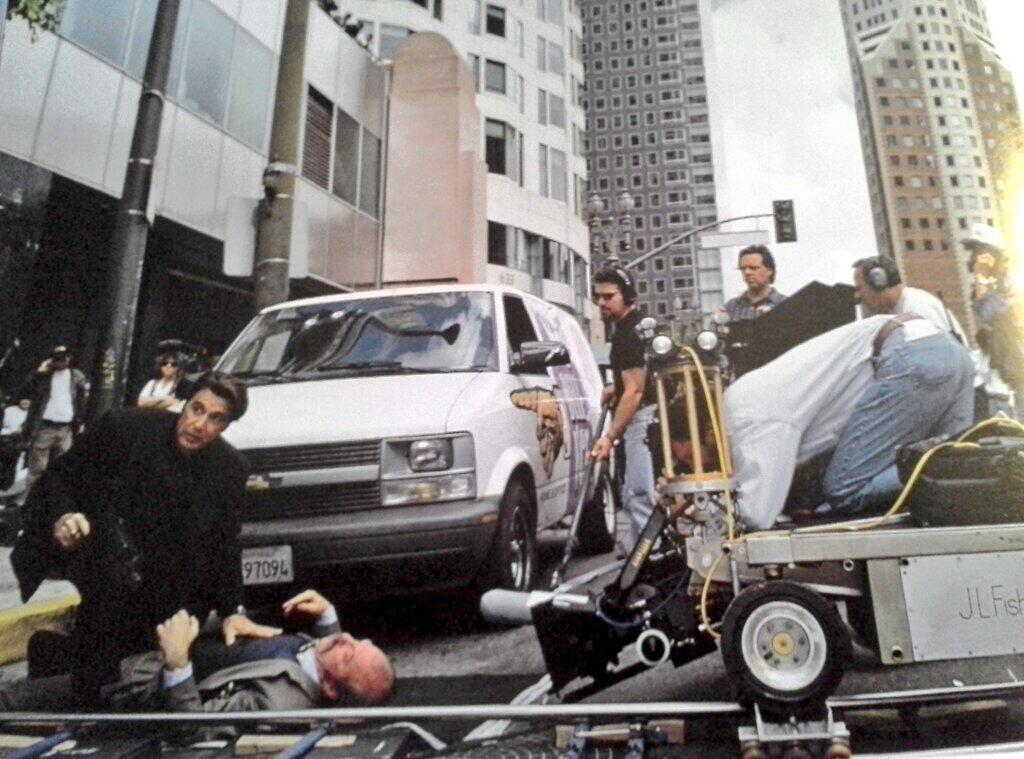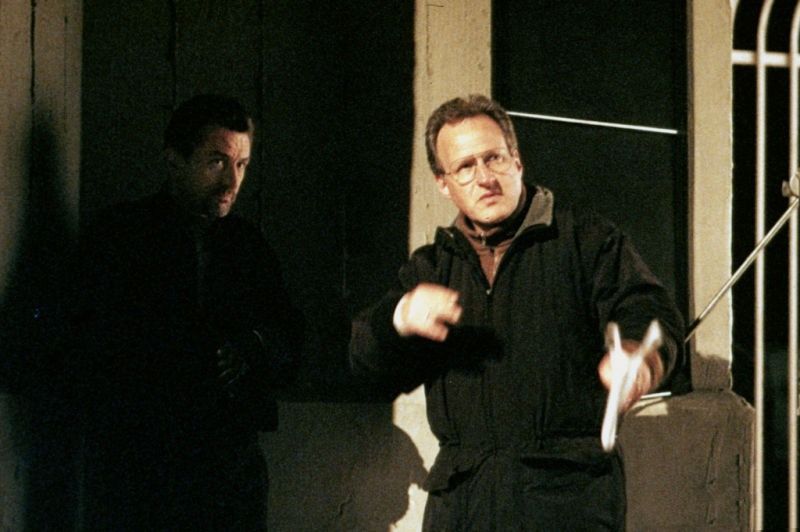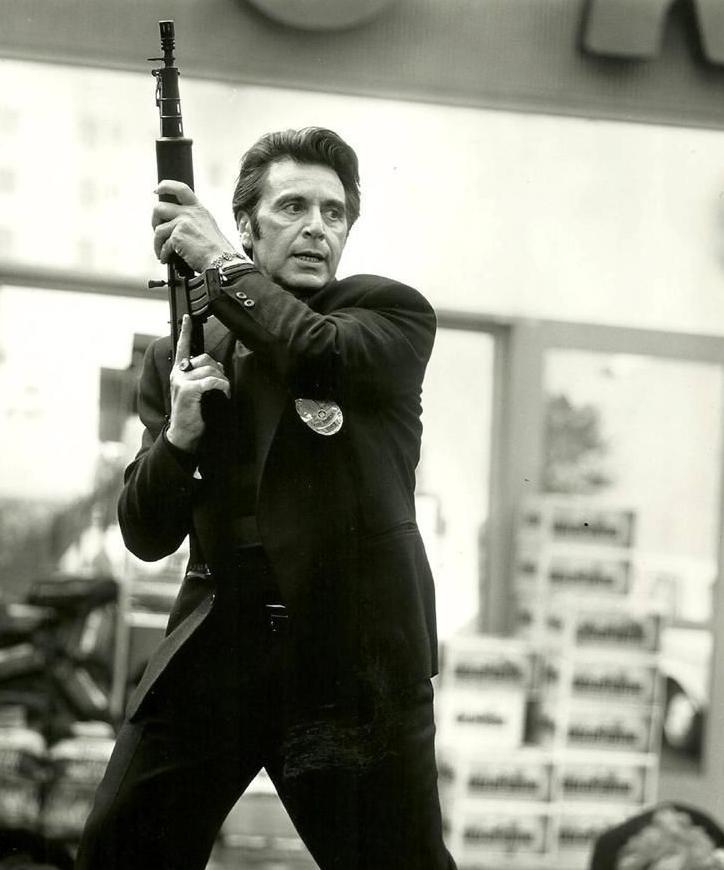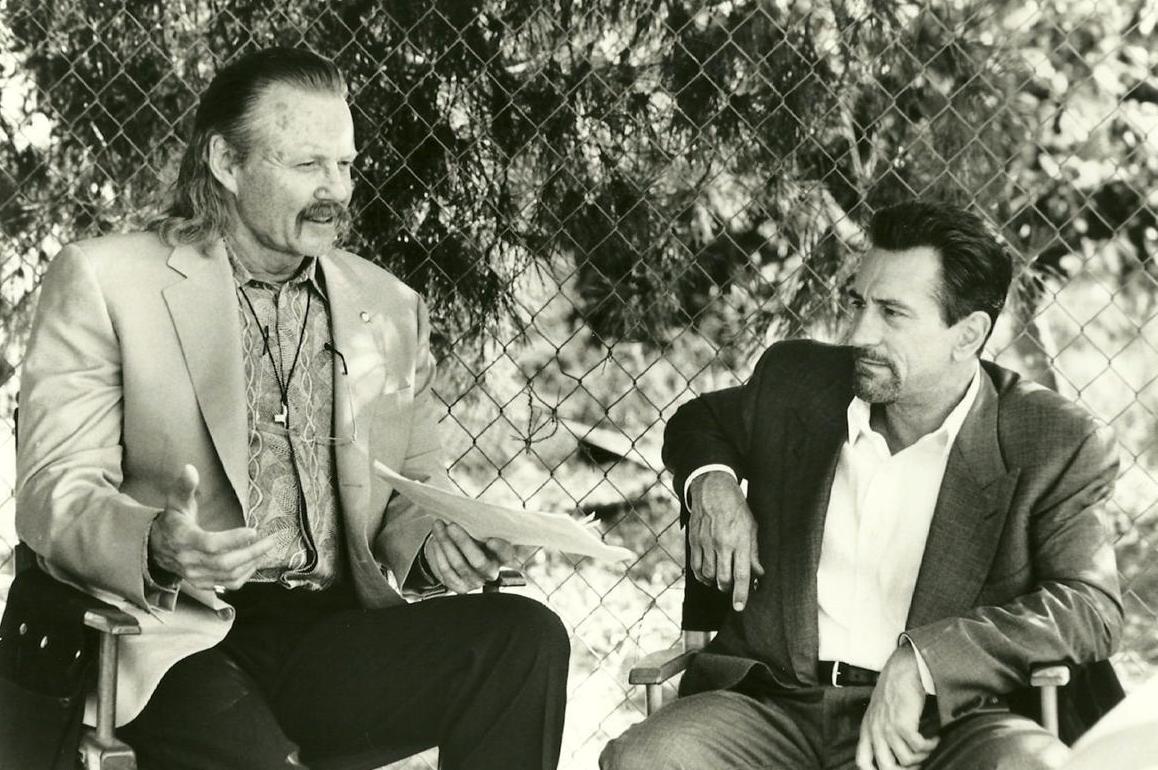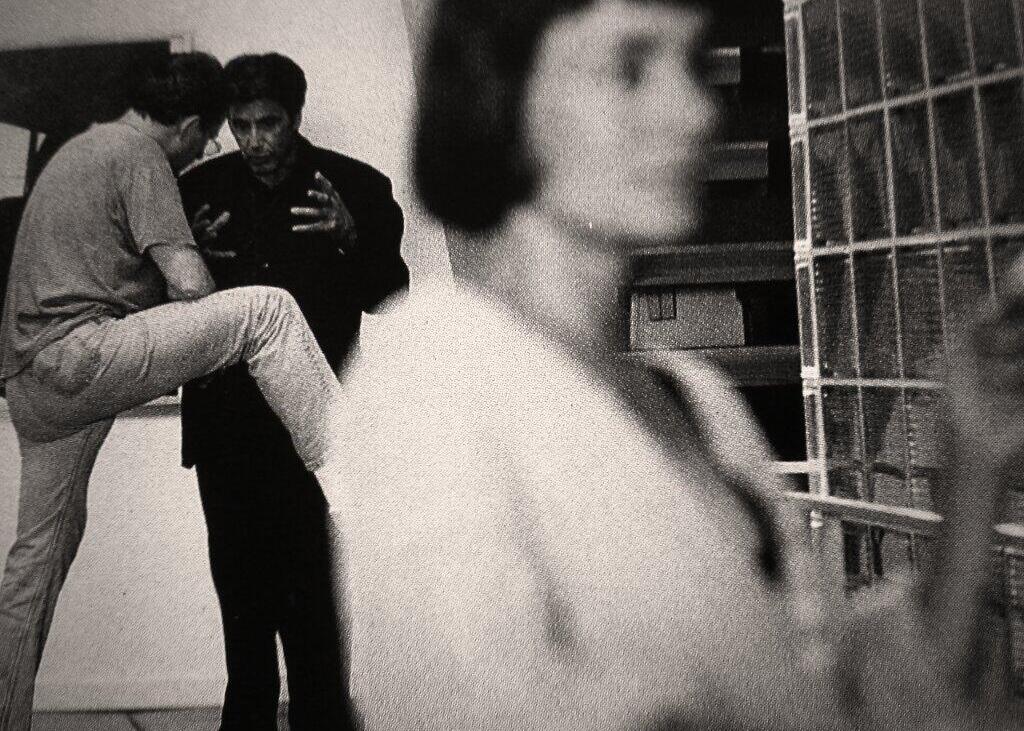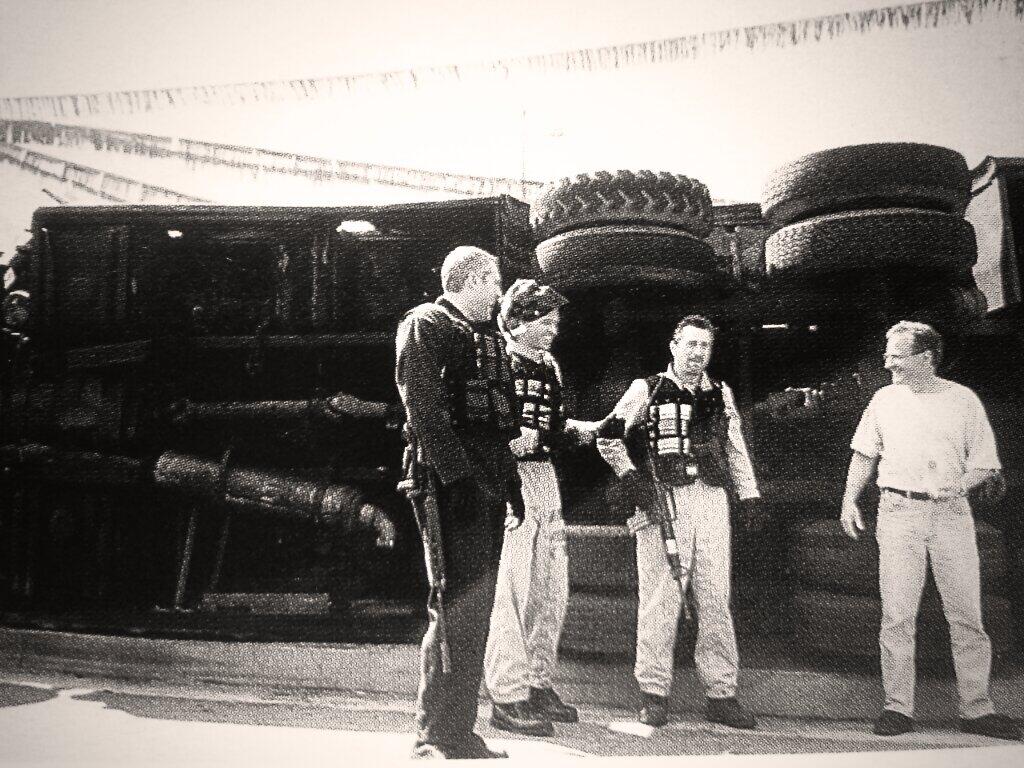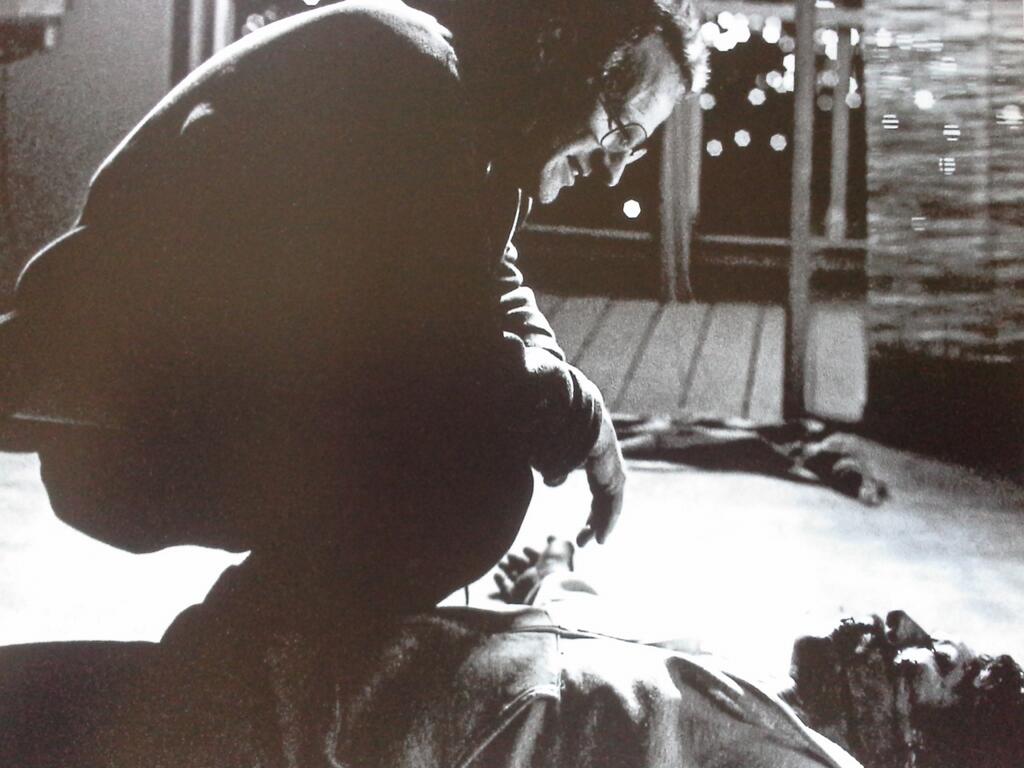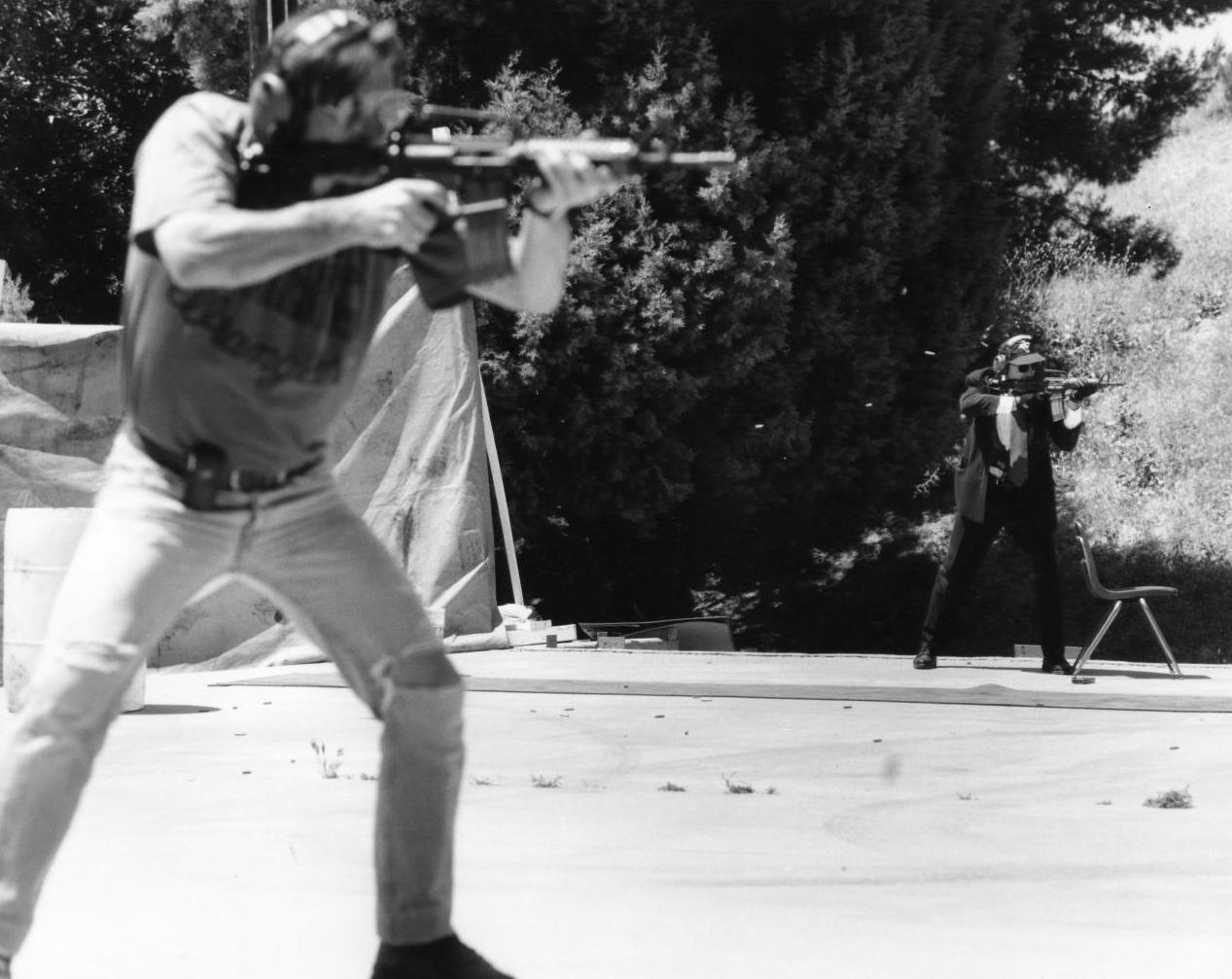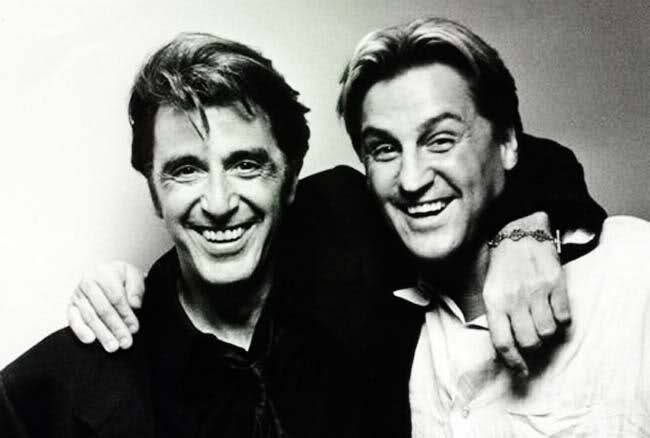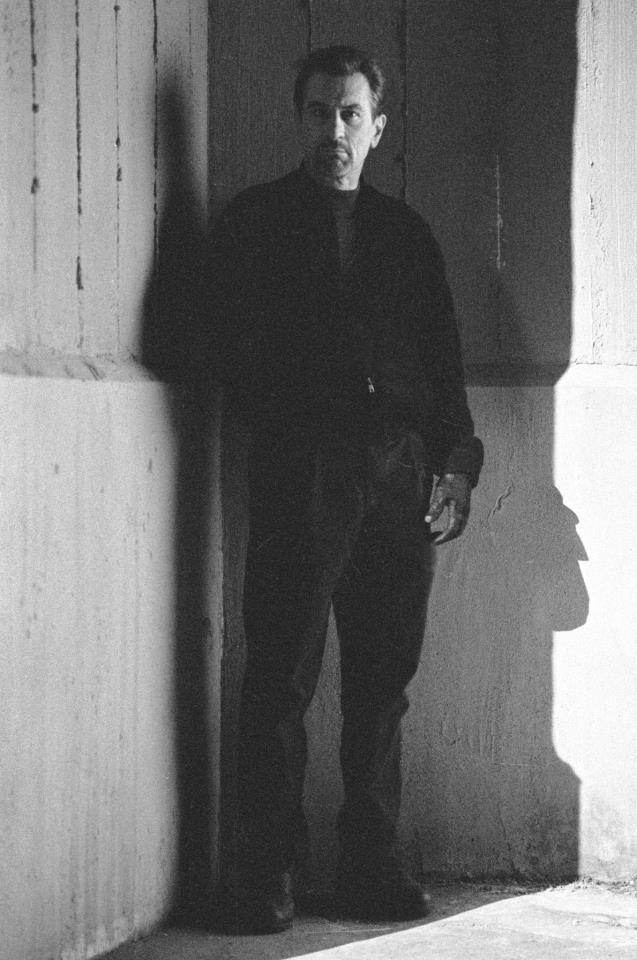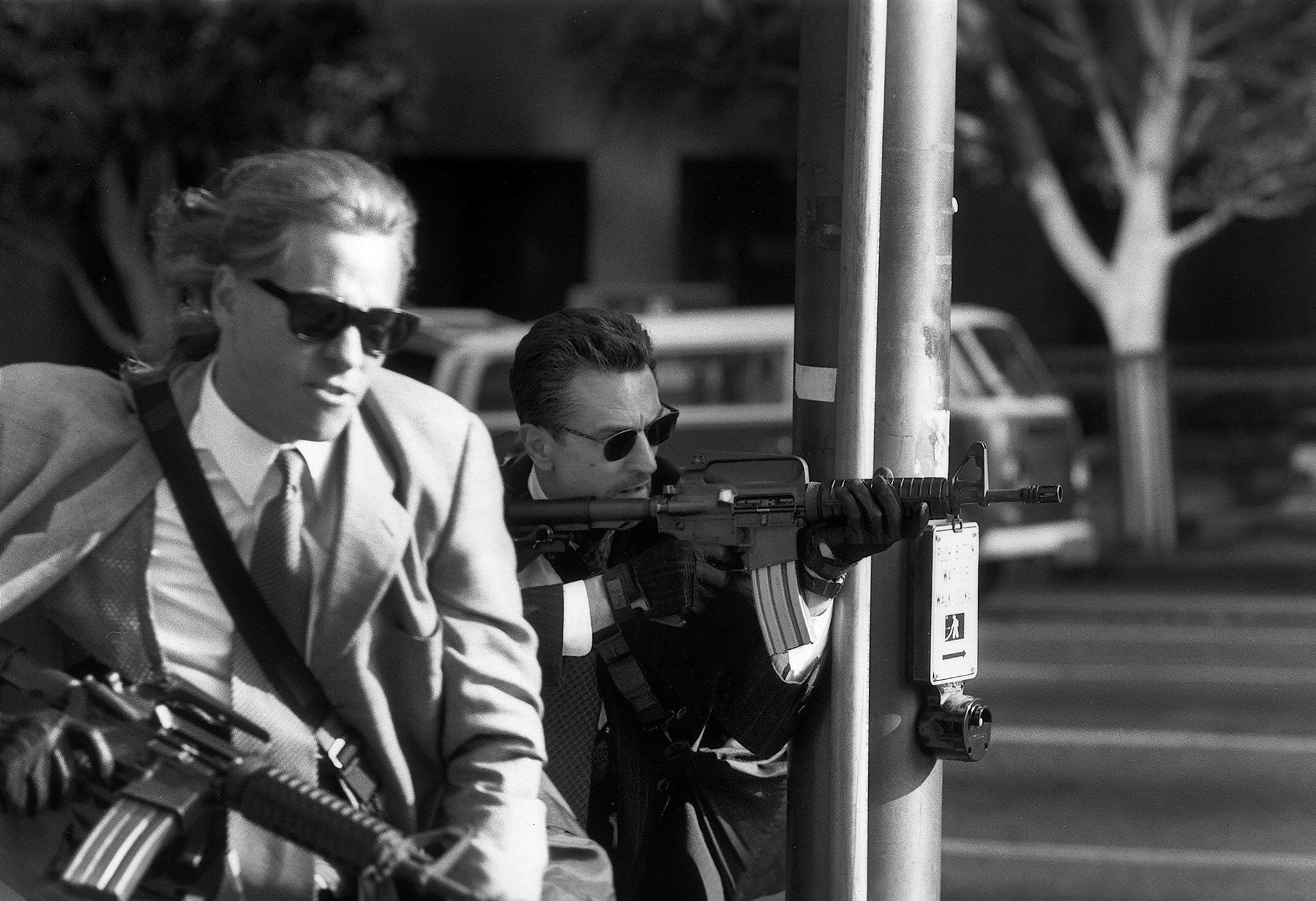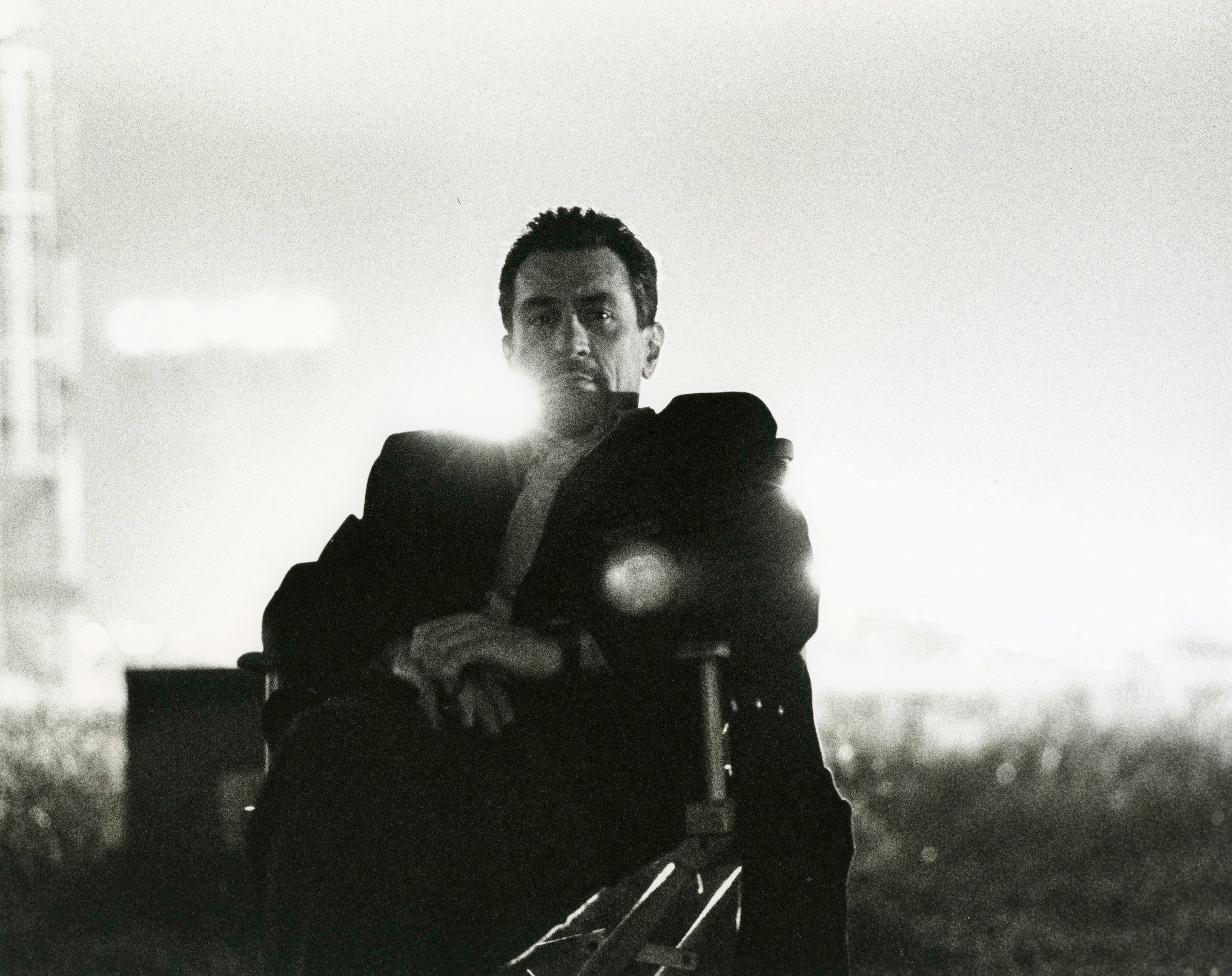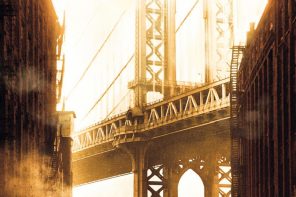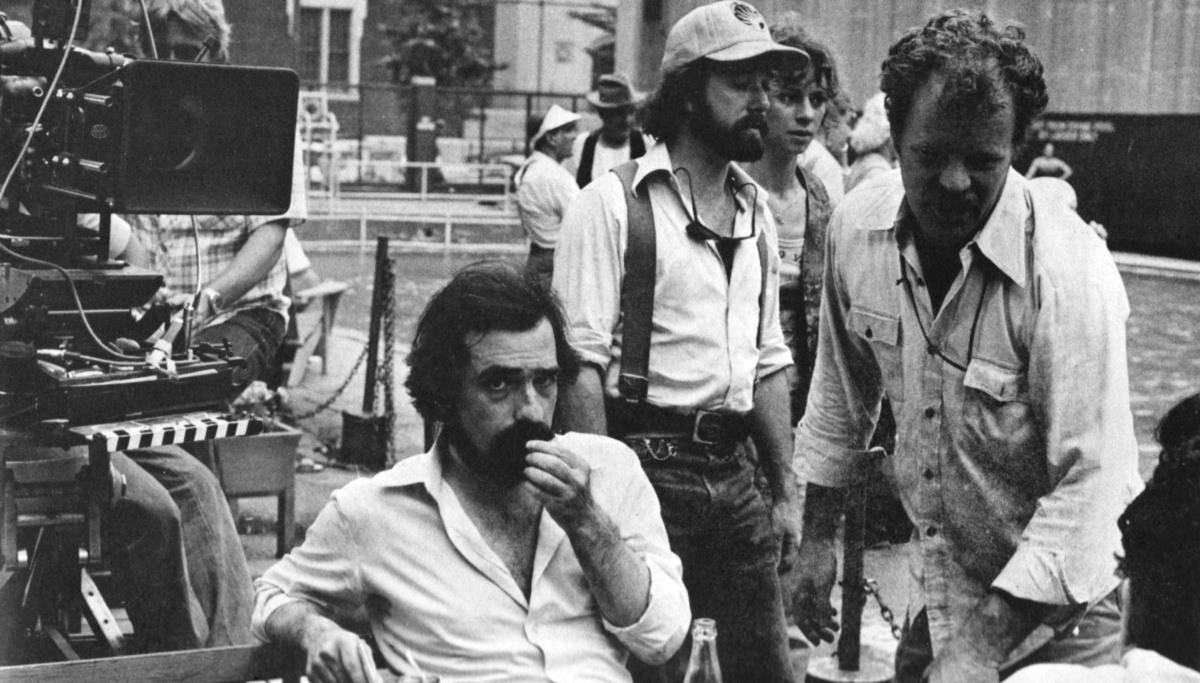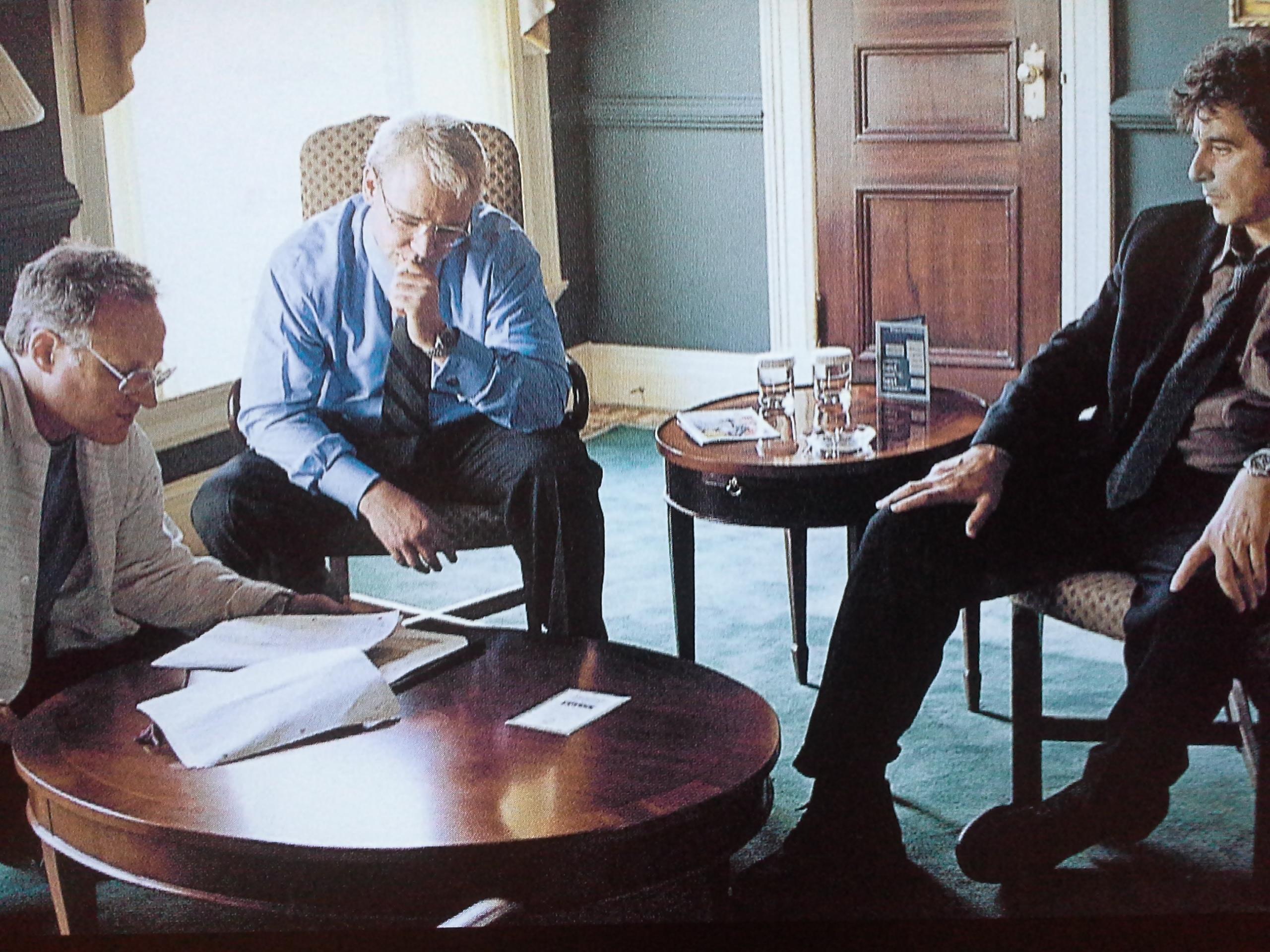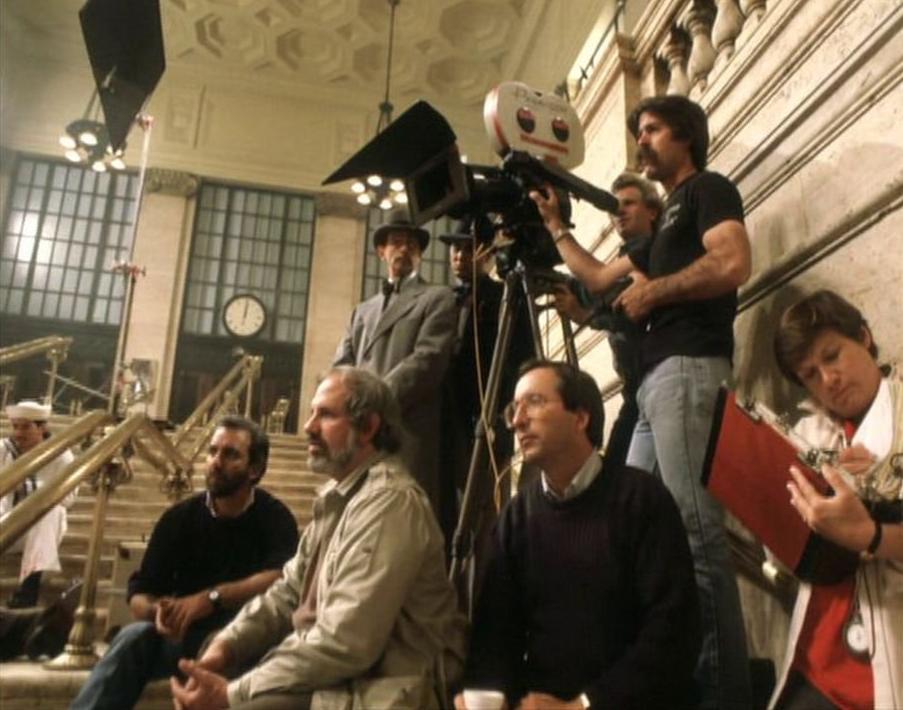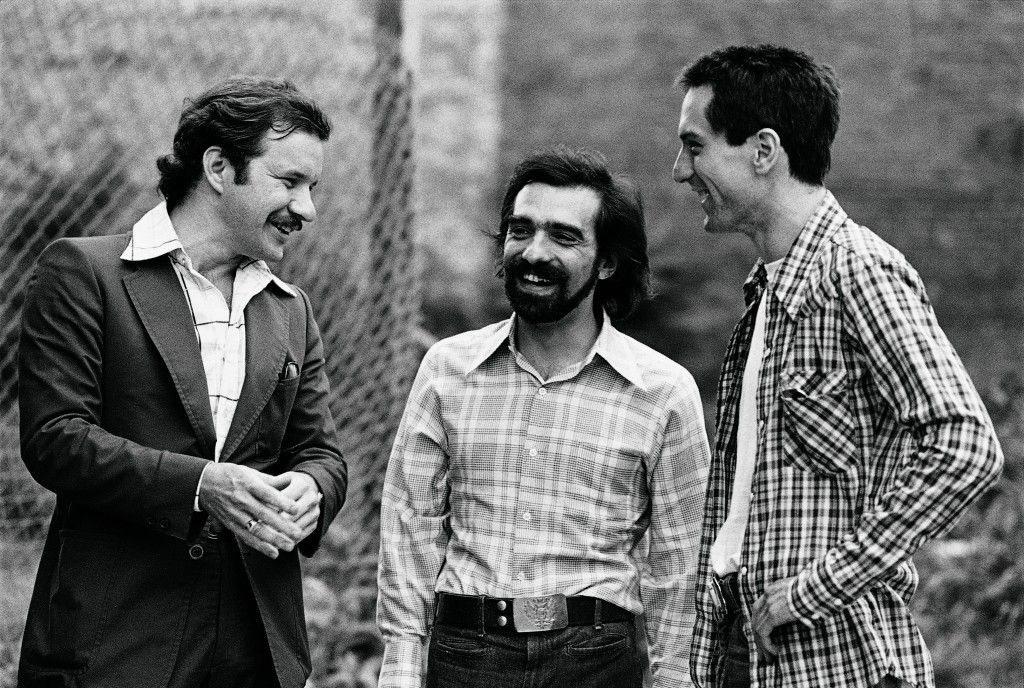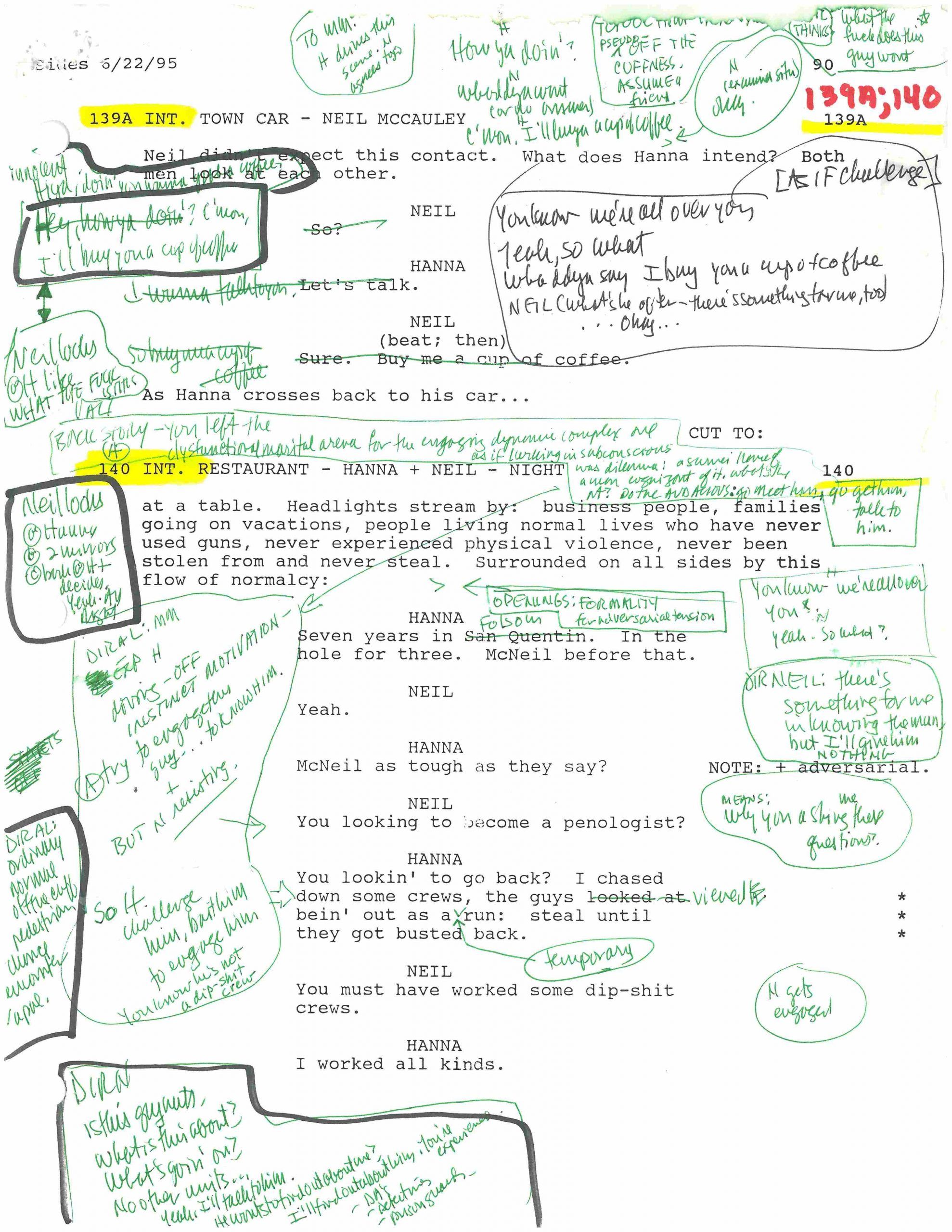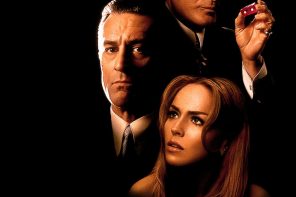By Sven Mikulec
Michael Mann’s crime thriller Heat was a project whose development path started all the way back in 1979, but when it finally hit theaters in 1995, it seemed obvious that it was well worth the wait. Even though it’s probably the easiest to categorize it as a thriller, since what lies at the heart of the film is a cat-and-mouse game of a hard driven criminal and an almost supernaturally dedicated police officer, Heat is one of the most revered movies of the nineties specifically because of its complexity with regard to its subject and themes. Anyone curious enough to want to know what Heat would look like as a straightforward crime thriller, just get your hands on L.A. Takedown, the television movie that Mann made as a pilot for a TV show that never got past that one episode. As Mann put it himself, L.A. Takedown is basically a simpler, much shortened and thematically far less complicated version of Heat shot only in 20 days. To see what makes Heat such a spectacle to behold, compare it to its predecessor: equally justifiable as seeing the picture as a stylistically supreme thriller with grandiose performances from Pacino, De Niro, Kilmer, Sizemore and Voight is to watch it as a powerful study of human beings, the frailty of their relationships, the burden of their haunting loneliness and painful disconnection with the rest of the living world. Now almost mythological conflict at the center of the film was based on a real-life story that occurred back in the sixties, when a Chicago police officer Chuck Adamson caught and killed a notorious criminal called Neil McCauley. Adamson, whom Mann considered a close friend, created the TV drama Crime Story, as well as served as a writer of many episodes of Miami Vice. To what degree Mann was inclined to breathe in a strong air of authenticity to the story can be seen not only in his conferring with Adamson as a consultant, but also in the fact that not a single scene of Heat was shot on a soundstage. Instead, Mann used over seventy real Los Angeles locations, specifically asking his crew to find places that had never been featured in movies before. In order to prepare his crew for the scenes whose sense of realism was crucial for the film, Mann even hired a professional consultant under whose guidance the crew went through months of rigorous training with real weapons. The result is a dark, jittery film of an almost documentaristic sensibility, decorated with Mann’s crafty writing, dedicated character development, Elliot Goldenthal’s score and Dante Spinotti’s captivating visuals that further accentuate how the lead characters function as living islands among people who surround them.
The film has also gained historical value thanks to the unforgettable diner scene, where Pacino and De Niro, for the first time in the history of film, appear together in the same shot. But as entertaining as it might be for film buffs, Heat is too accomplished a film to be celebrated solely on such a trivial fact. “Though people characterize it as a crime thriller, that’s the last thing it is, at least in my mind. Its plot is driven by a crime story and a police story to a certain point, and then it breaks into a kind of chorus. In that chorus, we see slices of these different people’s lives,” Mann explained recently. This is the strength of Heat: that it pushes boundaries, explores far beyond the limitations of a genre it refuses to be contained by. Mann’s Heat is one of the quintessential films of the decade.
It isn’t a crime film to me. I don’t concern myself that much with genre categorisation. To me, Heat was always a highly structured, realistic, symphonic drama. I never thought of it as doing a genre piece. —Michael Mann
Screenwriter must-read: Michael Mann’s screenplay for Heat [PDF]. (NOTE: For educational and research purposes only). The DVD/Blu-ray of the film is available at Amazon and other online retailers. Absolutely our highest recommendation.
 Loading...
Loading...
Michael Mann’s densely annotated screenplay from the famous coffee shop scene between Al Pacino and Robert De Niro of Heat, courtesy of Empire Magazine & Deadline. On De Niro’s suggestion they didn’t rehearse the scene together so that the unfamiliarity between the two characters would seem more genuine. Mann ran three cameras simultaneously in order to generate a greater level of fluidity between both rivals. Since there were no rehearsals for the scene, this approach afforded both men a more generous margin for improvisational experimentation. Mann allowed Deadline to see the actual marked up shooting script that he, Pacino and De Niro worked off during the classic mano a mano scene between Pacino’s Hanna and De Niro [PDF].
“Michael Mann’s attention to detail is clearly visible in his annotated script that stresses the importance of this pivotal scene. I have merged the written page with the film footage so you can analyze and learn what made the final cut, what was improvised and what was left out. I’ve also added some trivia nuggets into the video from the production of the scene.” —Heat Script to Screen by Vashi Nedomansky
THE STUDY OF MANN
Thieves, assassins, mad men, whistle-blowers, and gamblers have all populated the extreme adventures of Michael Mann’s films. For more than 30 years, with style and precision, he has examined the richness of human experience. Courtesy of Directors Guild of America’s F.X. Feeney.
How did you apply that to the famous coffee shop scene between Al Pacino and Robert De Niro in Heat (1995) when the two adversaries meet head-to-head for the first and only time?
We did two things: We discussed the scene. Then we did some rehearsals, but I was wary because the entire movie is a dialectic that works backward from its last moment, which is the death of the thief Neil McCauley [De Niro], while the detective Vincent Hanna [Pacino], who’s just taken McCauley’s life, stands with him as he passes. The ‘marriage’ of the two of them in this contrapuntal story is the coffee shop scene. Now Pacino and De Niro are two of the greatest actors on the planet, so I knew they would be completely alive to each other—each one reacting off the other’s slightest gesture, the slightest shift of weight. If De Niro’s right foot sitting in that chair slid backward by so much as an inch, or his right shoulder dropped by just a little bit, I knew Al would be reading that. They’d be scanning each other, like an MRI. Both men recognize that their next encounter will mean certain death for one of them. Gaining an edge is why they’ve chosen to meet. So we read the scene a number of times before shooting—not a lot—just looking at it on the page. I didn’t want it memorized. My goal was to get them past the unfamiliarity of it. But of course these two already knew it impeccably.You made an interesting choice directorially in the finished film. The whole scene takes place in over-the-shoulder close-ups—each man’s point of view on the other.
We shot that scene with three cameras, two over-the-shoulders and one profile shot, but I found when editing that every time we cut to the profile, the scene lost its one-on-one intensity. I’ll often work with multiple cameras, if they’re needed. In this case, I knew ahead of time that Pacino and De Niro were so highly attuned to each other that each take would have its own organic unity. Whatever one said, and the specific way he’d say it, would spark a specific reaction in the other. I needed to shoot in such a way that I could use the same take from both angles. What’s in the finished film is almost all of take 11—because that has an entirely different integrity and tonality from takes 10, or 9, or 8. All of this begins and ends with scene analysis. It doesn’t matter if it’s two people in a room or two opposing forces taking over a street. Action comes from drama, and drama is conflict: What’s the conflict?At the opposite end of the scale from that intimate two-man scene in the coffee shop is the huge street-battle in Heat. How did you prepare a sequence that massive?
That scene arose out of choreography, and was absolutely no different than staging a dance. We rehearsed in detail by taking over three target ranges belonging to the L.A. County Sheriff’s Department. We built a true-scale mock-up of the actual location we were using along 5th Street in downtown L.A., with flats and barriers standing in for where every parked car was going to be, every mailbox, every spot where De Niro, Tom Sizemore, and Val Kilmer were going to seek cover as they moved from station to station. Every player was trained with weapons the way somebody in the military would be brought up, across many days, with very rigid rules of safety, to the point where the safe and prodigious handling of those weapons became reflexive. Then, as a culmination, we blocked out the action with the actors shooting live rounds at fixed targets as they moved along in these rehearsals. The confidence that grew out of such intensive preparations—all proceeding from a very basic dramatic point—meant that when we were finally filming on 5th Street, firing blanks, each man was as fully and as exactly skilled as the character he represented.What was the ‘conflict’ your choreography was proceeding from?
McCauley’s unit wants to get out, while the police want something else, and are sending in their assets. Judged strictly in terms of scene analysis and character motivation, the police are used to entering a situation with overwhelming power on their side. When they’re assaulted by people who know what they’re doing, they don’t do well. McCauley’s guys are simply more motivated, and have skills that easily overwhelm the police. Choreography has to tell a story; there’s no such thing as a stand-alone shootout. Who your characters are as characters determines your outcome. —The Study of Mann
Mann was a guest in the second season of The Hollywood Masters, the interview series moderated by THR’s executive features editor Stephen Galloway.
Let’s take a quick look at Heat, which is many people’s favorite film of yours. Two American icons of the screen. Were you scared?
Uh, no. We were too busy anticipating this scene to be scared. There’s a healthy amount of apprehension, we knew it was a terribly important scene and all three of us wanted to be very careful about how we approached it. Early on, I decided I never wanted to rehearse that scene, I wanted to bring everybody’s understanding to it, and Al and Bob and I, we’d talk through what it means and kind of just kind of sketch, you know, “I’m going to have you sit [here].” But we were all smart enough to not want to have it get stale. The imperative was to keep it fresh so that what occurred spontaneously could occur right there. And, along those lines, they had very simple lighting, very simple setup, both sides were shot simultaneously, there was a third camera shooting a two-shot, which I never used any of, and knew that the guys were so good, and we’re all looking forward to this scene so much that I knew that there would be an organic unity to each take, because of the character’s actions, why they’re doing what they’re doing, why they’re meeting, why they’re talking to each other, why Pacino went to get him and why Neil McCauley [De Niro] thought he could get something from this meeting, too. I knew that there would be this organic unity if Al shifted this much in the scene, you know, Bobby would be like this, because Al was watching his right hand the whole time—was his hand going to go to his gun?—and so they’re not sitting like this, you know, if there’s a holster back here, with his hands very close to the gun. So, all of that body language they were clocking, they were so intensely focused on each other, and that was the case. So, everything you’re looking at is take 11.Two cameras or just one?
Yeah, I had two cameras, and there were two guys facing, you and I, there’s two over-the-shoulders and this camera is barely keeping that camera that’s shooting me out of the frame. I mean, if it moved over half an inch, it would pick up that crew shooting that camera.Did they know each other before this?
Yeah, yeah. They had talked about working together and they knew each other, you know, casually. They weren’t best friends, but they knew about each other and then this opportunity arose and they meant different things in each character’s life at that moment in time. Al’s [character, the detective] Vincent Hanna’s marriage was falling apart and in the depths of a depression about his screwed-up marriage number three, a big idea occurs to him, “Go get this guy. Go talk to him.” I’ve had really great cops, these really great detectives tell me this—Hanna is feeding into his conscious mind and his subconscious mind details about this guy. He’s learning things, he’s soaking things up. He will pick up something and, down the road, there’ll be a move that Neil McCauley’s making and Vincent Hanna won’t know whether to go A to A or B, you know, and there’ll be some intuition that he’ll have because of this meeting. He’ll guess that Neil McCauley was going through the B door, and that’s what he got out of this.What’s interesting about this is that it was hard for you to get off the ground and you did get off the ground as a TV pilot. LA Takedown, which you can see online is fascinating because you can see the same scene and dialogue from different actors. What happened and was it then difficult to make the film?
No, because nobody had paid much attention to the pilot. I’d written the screenplay years prior and it never had the ending. And I had everything leading up to the ending. The screenplay was about 160 pages long. I took part of it and then did it as this movie. I owned the pilot. I raised the financing, because I wanted to control it, because if I wanted to make it a film, I didn’t want to have to then go to somebody for the rights. And then I got the ending, which is basically that De Niro’s character is fortunate enough to die in the presence of the only other guy on the planet who he’s actually quite similar to in certain respects. Very different in other respects, but the premise of the film, the conceit of the film, is that they are the only two people in the universe of this movie who are totally self-aware. They’re completely conscious. —Michael Mann
MANN MADE: FROM LA TAKEDOWN TO HEAT
Here is a bit of must-see Michael Mann interview treasure: 17-minute BBC documentary, Mann Made: From LA Takedown To Heat, consists of an extended interview with Mann, where he recounts the stripped-down version of his 180-page screenplay for Heat, in a 1989 made-for-TV quickie called LA Takedown, as well as his unhurried workflow. It’s a fascinating insight into how Mann’s mind works. Note what he says about the role of architecture. Great stuff. Courtesy of Michael Mann Blog.
Michael Mann shot these photographic storyboards in prep for the heist sequence in Heat. Courtesy of Will McCrabb.
Heat heist scene; Michael Mann’s commentary.
Michael Mann talks about the memorable shootout scene from Heat, the prequel he’s written and his plans for it, and a lot more.
This hugely detailed and enjoyable documentary about the making of Heat covers its origins, as well as the overall love shared for this project by everyone involved through many interviews with cast and crew members.
MANN’S CRIME CLASSIC BRINGS ON THE HEAT 20 YEARS LATER
The Academy’s Samuel Goldwyn Theater was rocked with the sounds of applause and high-octane action on September 7, 2016 when the cast and crew of the epic crime film Heat reunited for a look at the making of this Los Angeles movie milestone. After an introduction by Academy CEO Dawn Hudson, filmmaker Christopher Nolan greeted the sold-out crowd and brought to the stage writer-producer-director Michael Mann and Oscar-winning actors Al Pacino and Robert De Niro, followed by a larger panel with more participants.
AN EVENING WITH MICHAEL MANN
Michael Mann is a master of the modern urban noir, with a unique brand of pulp poetry that is pure cinephiliac pleasure. He defined cool in the 1980s, directed some of the most highly regarded thrillers of the 1990s, and pioneered digital filmmaking in the 2000s. BAMcinématek presents this career retrospective showcasing the visionary auteur’s intelligent, stylish, and intensely entertaining films, which mark an uncompromising commitment to aesthetic perfection and an almost obsessive exploration of his key archetype: the renegade antihero who plays by his own rules. Watch the entire conversation between director Michael Mann and Village Voice film critic Bilge Ebiri from February 11, 2016 event, part of the full-career retrospective Heat & Vice: The Films of Michael Mann.
Blake Howard and Bilge Ebiri discuss Heat’s poetry, being face-to-face with Michael Mann, Hanna’s light bulb moment when he hears “I have a woman,” and McCauley abandoning his code to let the “heat” sit in front of him and buy him a cup of coffee.
Following a screening at TIFF 2015, director Michael Man discusses his iconic film.
ZEN PULP
“Back in the summer of 2009, Matt Zoller Seitz launched a five-part series of video essays on Mann for Moving Image Source. The title of the series: Zen Pulp, and he began, of course, with one of the definitive television series of the 80′s, Miami Vice: “Looking back on the show’s signature themes, situations, and images, Vice is so clearly set in Mann’s world that it seems a nexus point in his career. Everything he’d done before fed into it and nourished it; everything he’s done since reflects upon it, raids it, or builds on it.” Part 2 focused on Mann’s heroes, “thieves and killers, G-men and cops. They exist both inside and outside the system. Some like working in concentrated groups; others are lone wolves. But they all have certain traits in common. They are radical, sometimes fanatical individualists. They have a code of honor and stick to it. They value loyalty, respect, and professionalism and despise incompetence, equivocation, and ass-kissing.” Part 3 turns to “one of the more notable aspects of Mann’s filmography: the central importance it grants to the relationship between men and women, and the mix of idealization and dread with which Mann portrays love, commitment, and the comfortable domestic life.” Part 4 concentrates on reflections, doubles, and doppelgängers, and Part 5 takes us back to the 80′s, to Crime Story.” —David Hudson
LES RÉALISATEURS: MICHAEL MANN
“An excellent documentary of key scenes with Michael Mann and actors. For as long as these videos are available online, you can treat yourself to some old but powerful Michael Mann interviews with some of our best loved Michael Mann scenes. This is wonderful footage, including actor interviews about the Tiger scene from Manhunter and that extraordinarily charged cliff scene in Last of the Mohicans. It includes scenes from Heat, and also The Insider. Actors speak about who they feel Michael Mann is, with some superb quotes to take away that sum up our favourite director. Get Michael Mann’s inside story. Essential viewing, enjoy.” —Michael-Mann.net
MICHAEL MANN ON FILMMAKING
How does Michael Mann make films? And what are his influences in that approach? What does making films mean to him?
Be sure to check out Film School Thru Commentaries’ post to get the link to download a full shot breakdown of Michael Mann’s 1995 masterpiece.
One Heat Minute is the podcast examining Michael Mann’s 1995 L.A crime saga Heat minute by minute. It’s the series finale and the second part of the examination of the 166th minute (2:45:00 – 2:46:00)—and host Blake Howard joins a guest that needs no introduction. The final crescendo of the incredibly extensive, yet limited, series is none other than the legendary mastermind director, screenwriter and producer of Heat, Michael Mann. Blake and Mann discuss airports as romantic alien landscapes, crafting performances with his legendary players, the occurrence of the moment depicted that unlocked the epic and the feeling that while it was filming that there was nowhere else on planet earth that he and his cast would have preferred to be.
Here are several photos taken behind-the-scenes during production of Michael Mann’s Heat. Photographed by Frank Connor © Warner Bros. Intended for editorial use only. All material for educational and noncommercial purposes only.
If you find Cinephilia & Beyond useful and inspiring, please consider making a small donation. Your generosity preserves film knowledge for future generations. To donate, please visit our donation page, or click on the icon below:
Get Cinephilia & Beyond in your inbox by signing in
[newsletter]

